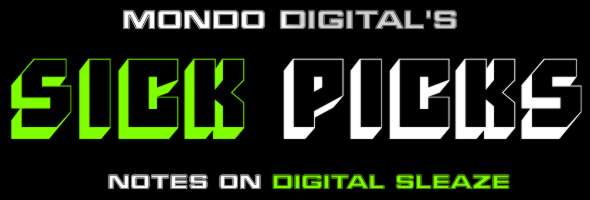

April 27, 2025
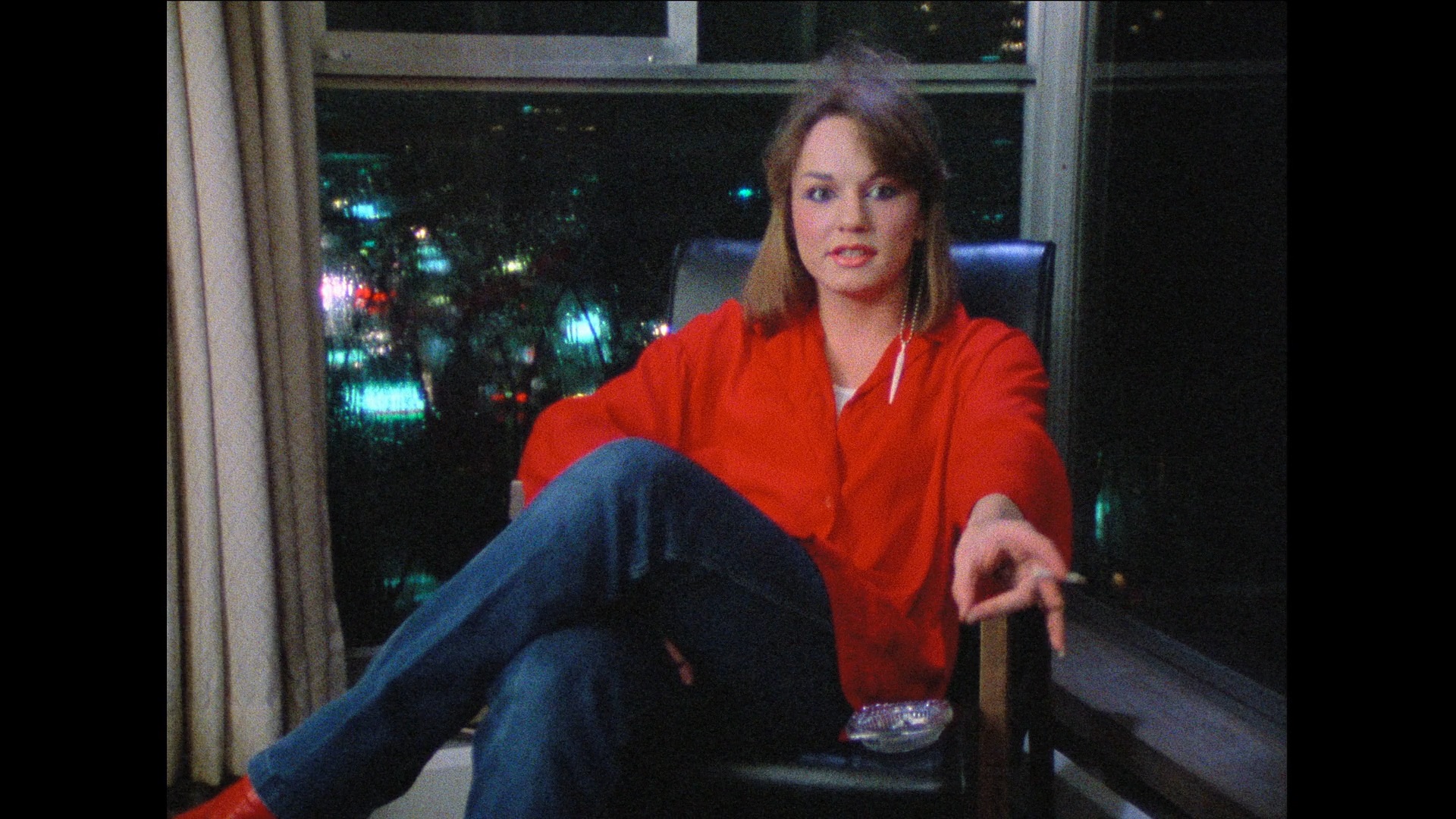 priceless chronicle of the Vancouver area where prostitutes (female, male, or trans) would work from around noon well into the wee hours of the night. In stark contrast to the usual '80s depictions of pimps, brutality, depraved johns, etc., what we get here is an unusual kind of workplace documentary showing how they congregate, keep each
priceless chronicle of the Vancouver area where prostitutes (female, male, or trans) would work from around noon well into the wee hours of the night. In stark contrast to the usual '80s depictions of pimps, brutality, depraved johns, etc., what we get here is an unusual kind of workplace documentary showing how they congregate, keep each 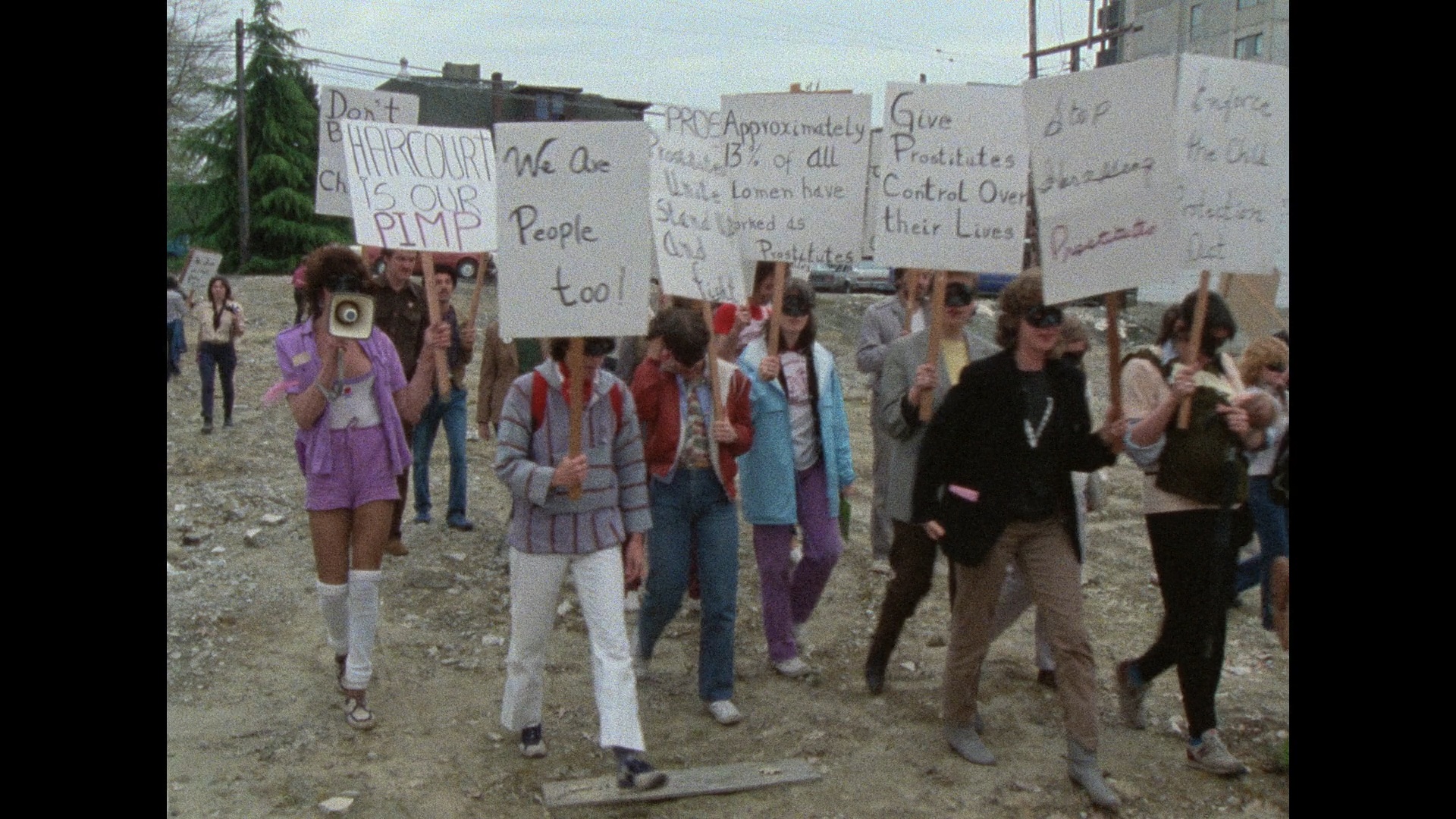 other updated on health and safety, and reflect on what their lifestyle means in the larger picture of their lives. Kicking off with the song "Street Life" in a very different context from its use in Sharky's Machine and Jackie Brown, the film mixes interviews with its subjects, covert footage of them at work, and a narrative escalation involving the city's legislative efforts to "clean up" the area that culminate in the first Canadian publc protest for sex worker rights. The subjects here are all vivid, perceptive, and sympathetic with their own affecting stories, and of course with this being the mid-'80s, you also get a lot of spectacular feathered hairdos. An acclaimed award winner upon its release, this key film from the history of Candian documentaries was brought to UHD and Blu-ray as a two-disc set from Canadian International Pictures featuring a 4K restoration from the 16mm A/B negatives; it looks excellent here without sacrificing the raw, grainy nature of the original production, and the frequent red outfits in particular really pop on the UHD. Cole and Dale provide a great audio commentary about how the film came to be after their previous film on women's prison life, with lots of details about how they interacted with the subjects and what happened after the film came out. Also here is a commentary by artist and curator Jordan King about her own experiences with the film, the transformation of Vancouver and its arts and culture scene, the relevance of documentaries on society, and plenty more. Also included are a Cole intro (1m9s), a 7m39s audio afterward that basically wraps up the directors' commentary, a "Before Davie" (11m36s) interview with Cole about her earlier films with Dale, a "Directors on Davie" (22m40s) general overview of the project by Cole, a "Mardi on Tiggy" (13m56s) reel of tributes to her late friend and colleague, a look at "The West End Sex Workers Memorial Fundraiser" from 2009 (6m44s), a 1994 Toronto Arts Wards tribute to the two directors (4m40s), 1984 CBC and Citytv interviews with Cole and Dale (8m25s and 2m59s), VHS-sourced preliminary home movies (33m54s) shot before the actual production of the film, and an archival press gallery. Also included are two short films by the same directors, 1975's Cream Soda (13m) about strip club work and 1976's Minimum Charge (10m53s) focusing on the modeling work and tragic situation of one of the first film's subjects, both in new 2K scans and featuring Cole intros (1m42s and 1m49s), commentaries by both of them, and second commentaries with King. The set also comes with a booklet featuring essays by Kay Armatage, Adrian Rui Hung, and Cayley James Buy here and here.
other updated on health and safety, and reflect on what their lifestyle means in the larger picture of their lives. Kicking off with the song "Street Life" in a very different context from its use in Sharky's Machine and Jackie Brown, the film mixes interviews with its subjects, covert footage of them at work, and a narrative escalation involving the city's legislative efforts to "clean up" the area that culminate in the first Canadian publc protest for sex worker rights. The subjects here are all vivid, perceptive, and sympathetic with their own affecting stories, and of course with this being the mid-'80s, you also get a lot of spectacular feathered hairdos. An acclaimed award winner upon its release, this key film from the history of Candian documentaries was brought to UHD and Blu-ray as a two-disc set from Canadian International Pictures featuring a 4K restoration from the 16mm A/B negatives; it looks excellent here without sacrificing the raw, grainy nature of the original production, and the frequent red outfits in particular really pop on the UHD. Cole and Dale provide a great audio commentary about how the film came to be after their previous film on women's prison life, with lots of details about how they interacted with the subjects and what happened after the film came out. Also here is a commentary by artist and curator Jordan King about her own experiences with the film, the transformation of Vancouver and its arts and culture scene, the relevance of documentaries on society, and plenty more. Also included are a Cole intro (1m9s), a 7m39s audio afterward that basically wraps up the directors' commentary, a "Before Davie" (11m36s) interview with Cole about her earlier films with Dale, a "Directors on Davie" (22m40s) general overview of the project by Cole, a "Mardi on Tiggy" (13m56s) reel of tributes to her late friend and colleague, a look at "The West End Sex Workers Memorial Fundraiser" from 2009 (6m44s), a 1994 Toronto Arts Wards tribute to the two directors (4m40s), 1984 CBC and Citytv interviews with Cole and Dale (8m25s and 2m59s), VHS-sourced preliminary home movies (33m54s) shot before the actual production of the film, and an archival press gallery. Also included are two short films by the same directors, 1975's Cream Soda (13m) about strip club work and 1976's Minimum Charge (10m53s) focusing on the modeling work and tragic situation of one of the first film's subjects, both in new 2K scans and featuring Cole intros (1m42s and 1m49s), commentaries by both of them, and second commentaries with King. The set also comes with a booklet featuring essays by Kay Armatage, Adrian Rui Hung, and Cayley James Buy here and here.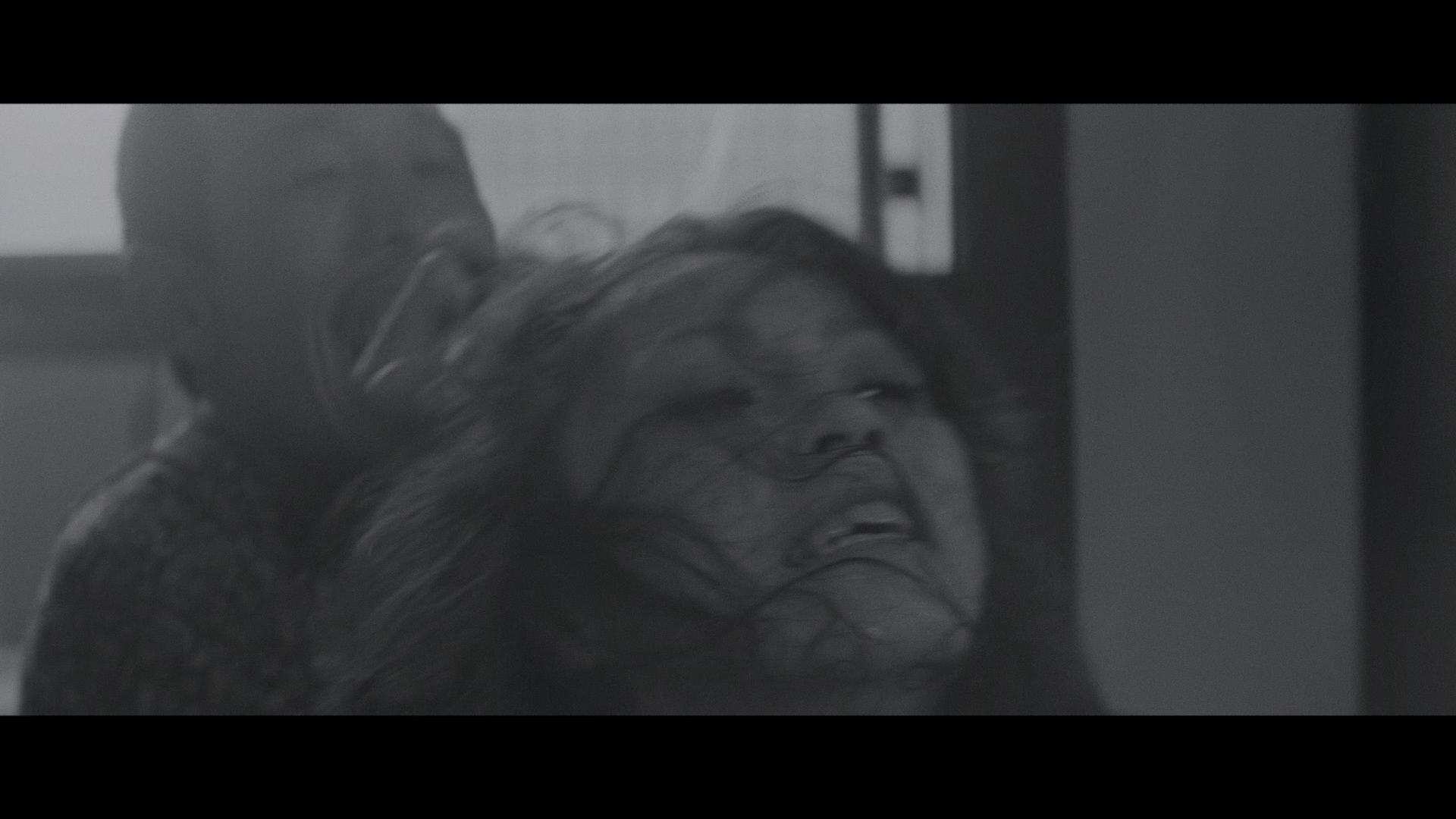 similar but darker take on prostitution, look no further than the absolutely wild 1974 Japanese film The Oldest Profession, also known under the more lurid literal translation of its original title, Secret Chronicle: She Beast Market.
similar but darker take on prostitution, look no further than the absolutely wild 1974 Japanese film The Oldest Profession, also known under the more lurid literal translation of its original title, Secret Chronicle: She Beast Market. 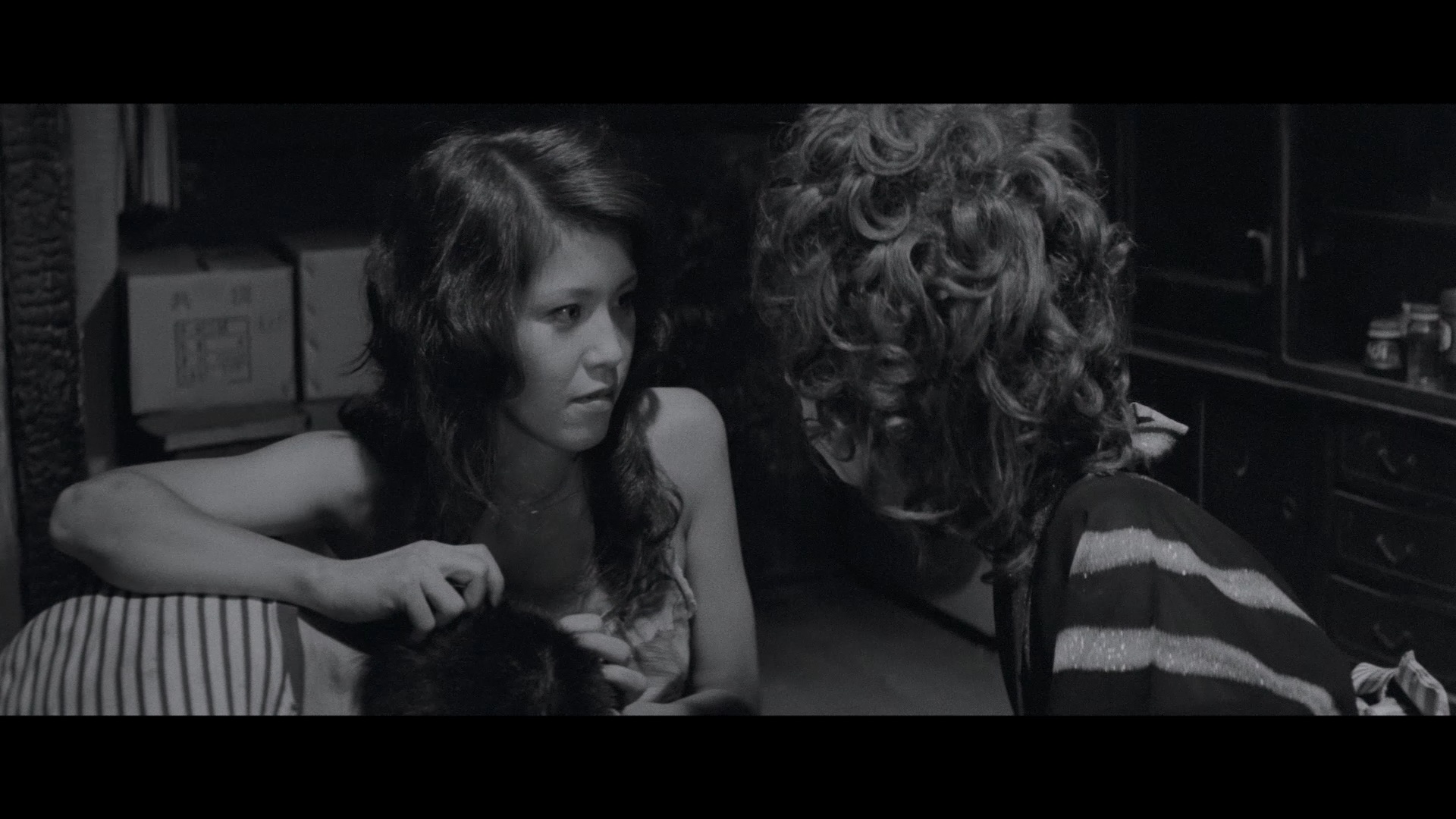 Directed by Noboru Tanaka (The Watcher in the Attic), it's a slice-of-life depiction of the life of Tome (Meika Seri) who works in Osaka's sex trade out of a massage parlor to help take care of her disabled little brother and her mother who's also in the business but aging out of it. As we follow her through some of her clients in an unrelentingly grungy, grim world of poverty and struggle, her family life starts to splinter as well. Since this was released by Nikkatsu and has a hefty amount of (extremely downbeat) sex and nudity, this tends to get classified as a Roman Porno film but really doesn't feel like it at all. Seri is superb here in a demanding and fearless role, and the film paints a vivid portrait of a world where prostitution may be illegal but remains a necessary part of life that the general public refuses to acknowledge. Though this has been floating around in fansubbed editions for ages, it finally got a nice restored HD release in the U.S. from Film Movement on Blu-ray that makes for a solid way to watch this for the first time if you've never heard of it before. The film has an intentionally diverse visual aesthetic, presented mainly but not entirely in black-and-white and using lens distortion in wide shots that gives the actors a squished appearance. (Medium and close-up shots look normal, so this isn't a defect.) Audio is DTS-HD MA 2.0 Japanese mono with optional English subtitles. In addition to a newly created trailer, the disc includes "Private Business & Public Obscenities" (14m47s), a video essay by Jasper Sharp breaking down the historical and social points to note in the film and how they tie in with the stance the film takes about its sordid subject matter. The disc also comes with an insert booklet featuring an essay by Alexander Fee. Buy here or here.
Directed by Noboru Tanaka (The Watcher in the Attic), it's a slice-of-life depiction of the life of Tome (Meika Seri) who works in Osaka's sex trade out of a massage parlor to help take care of her disabled little brother and her mother who's also in the business but aging out of it. As we follow her through some of her clients in an unrelentingly grungy, grim world of poverty and struggle, her family life starts to splinter as well. Since this was released by Nikkatsu and has a hefty amount of (extremely downbeat) sex and nudity, this tends to get classified as a Roman Porno film but really doesn't feel like it at all. Seri is superb here in a demanding and fearless role, and the film paints a vivid portrait of a world where prostitution may be illegal but remains a necessary part of life that the general public refuses to acknowledge. Though this has been floating around in fansubbed editions for ages, it finally got a nice restored HD release in the U.S. from Film Movement on Blu-ray that makes for a solid way to watch this for the first time if you've never heard of it before. The film has an intentionally diverse visual aesthetic, presented mainly but not entirely in black-and-white and using lens distortion in wide shots that gives the actors a squished appearance. (Medium and close-up shots look normal, so this isn't a defect.) Audio is DTS-HD MA 2.0 Japanese mono with optional English subtitles. In addition to a newly created trailer, the disc includes "Private Business & Public Obscenities" (14m47s), a video essay by Jasper Sharp breaking down the historical and social points to note in the film and how they tie in with the stance the film takes about its sordid subject matter. The disc also comes with an insert booklet featuring an essay by Alexander Fee. Buy here or here.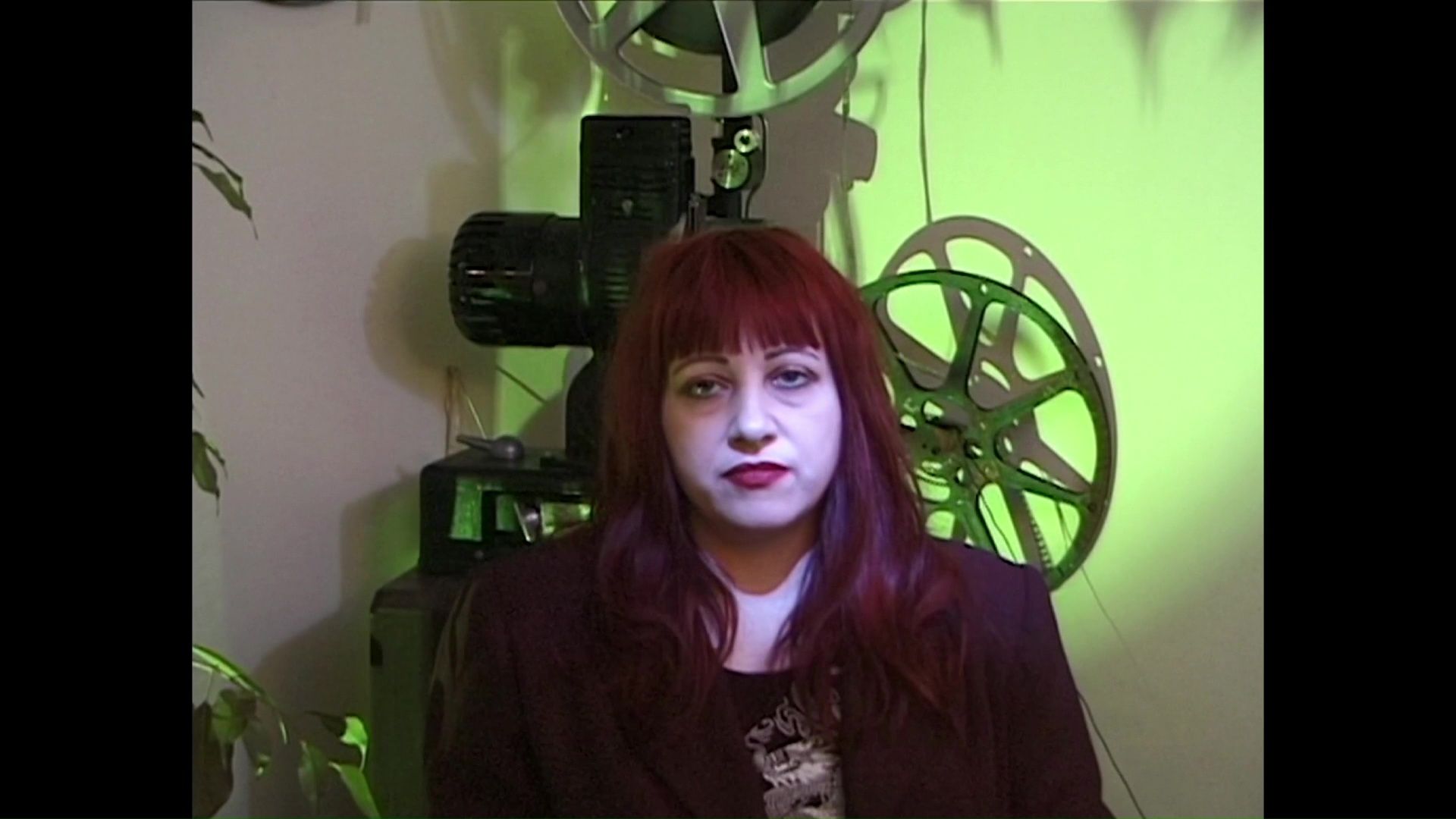 art house-style shops from 1989 well into the mid-'90s with Cinema of Transgression icon Lydia Lunch earning a slot next to colleagues like Richard Kern and Nick Zedd. Created with filmmaker Merrill Aldighieri, this shot-on-video experimental spoken word assault features music by J.G. Thirlwell (a.k.a. Foetus, her co-star in the notorious The Right Side of My Brain) with Lunch in front of a slew of video-generated
art house-style shops from 1989 well into the mid-'90s with Cinema of Transgression icon Lydia Lunch earning a slot next to colleagues like Richard Kern and Nick Zedd. Created with filmmaker Merrill Aldighieri, this shot-on-video experimental spoken word assault features music by J.G. Thirlwell (a.k.a. Foetus, her co-star in the notorious The Right Side of My Brain) with Lunch in front of a slew of video-generated 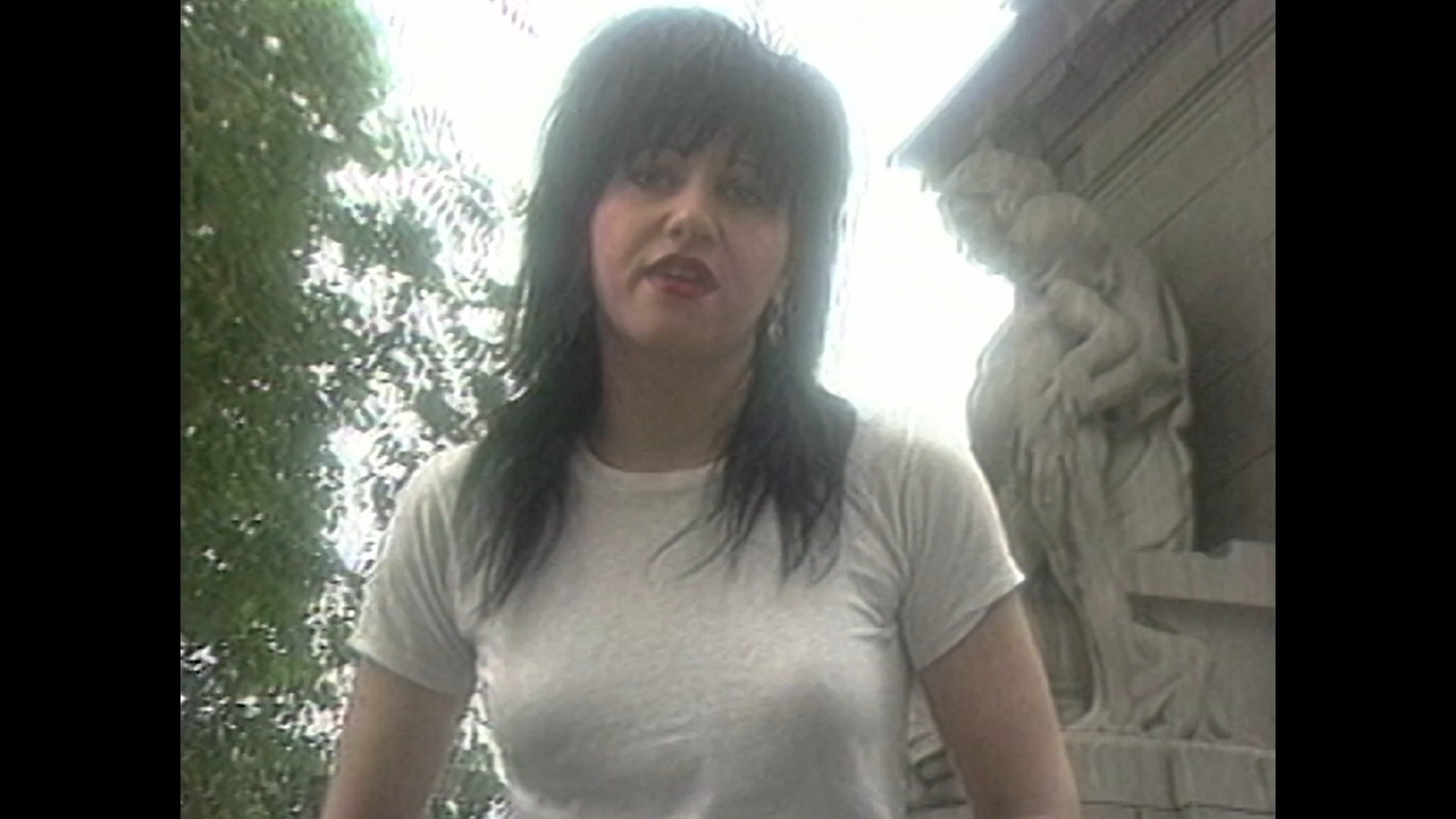 American iconography as she unloads about the aftermath of the Reagan era and its impact on the populace. Violent and hypnotic, it was a potent calling card that helped solidify her underground legend status which she continues to foster to this day. Also on the disc is 2012's Road Rant: A Week on the Road with Lydia Lunch, a 54-minute impressionisitc video collage of performance footage, radio appearances, candid travel footage, and animation by Aldighieri, all based around her tour in Europe. Both are taken from their SD video masters and look fine considering the obvious limitations. The first film also comes with an audio commentary by DTNYArchive's Shaun Goldsteen about Lunch's impact on the scene and context for some of the topics in the film, while Road Rant gets a 17m1s bonus clip of more stream-of-consciousness travel thoughts. A major highlight of the disc is the new "Iconoclastic Icon" (38m28s), a thorough new interview with Lunch chatting with Art Ettinger and Max Almeida about her background, her longstanding anti-war stance, the impact of incest on her art, the role of spoken word as her favored art form, her experimentation in music, and more. Then you get trailers for both films, a 2007 "Headless Angel" (2m56s) Lunch reading in the Pére-Lachaise cemetery, a Road Rant-era interview with Lunch by the director (35m52s), an archival 2004 interview with Lunch (18m8s) with Lucy Morrow and David Flint (Divinity), and a 1995 Lunch interview (15m6s) with Kern and Flint. Buy here or here.
American iconography as she unloads about the aftermath of the Reagan era and its impact on the populace. Violent and hypnotic, it was a potent calling card that helped solidify her underground legend status which she continues to foster to this day. Also on the disc is 2012's Road Rant: A Week on the Road with Lydia Lunch, a 54-minute impressionisitc video collage of performance footage, radio appearances, candid travel footage, and animation by Aldighieri, all based around her tour in Europe. Both are taken from their SD video masters and look fine considering the obvious limitations. The first film also comes with an audio commentary by DTNYArchive's Shaun Goldsteen about Lunch's impact on the scene and context for some of the topics in the film, while Road Rant gets a 17m1s bonus clip of more stream-of-consciousness travel thoughts. A major highlight of the disc is the new "Iconoclastic Icon" (38m28s), a thorough new interview with Lunch chatting with Art Ettinger and Max Almeida about her background, her longstanding anti-war stance, the impact of incest on her art, the role of spoken word as her favored art form, her experimentation in music, and more. Then you get trailers for both films, a 2007 "Headless Angel" (2m56s) Lunch reading in the Pére-Lachaise cemetery, a Road Rant-era interview with Lunch by the director (35m52s), an archival 2004 interview with Lunch (18m8s) with Lucy Morrow and David Flint (Divinity), and a 1995 Lunch interview (15m6s) with Kern and Flint. Buy here or here.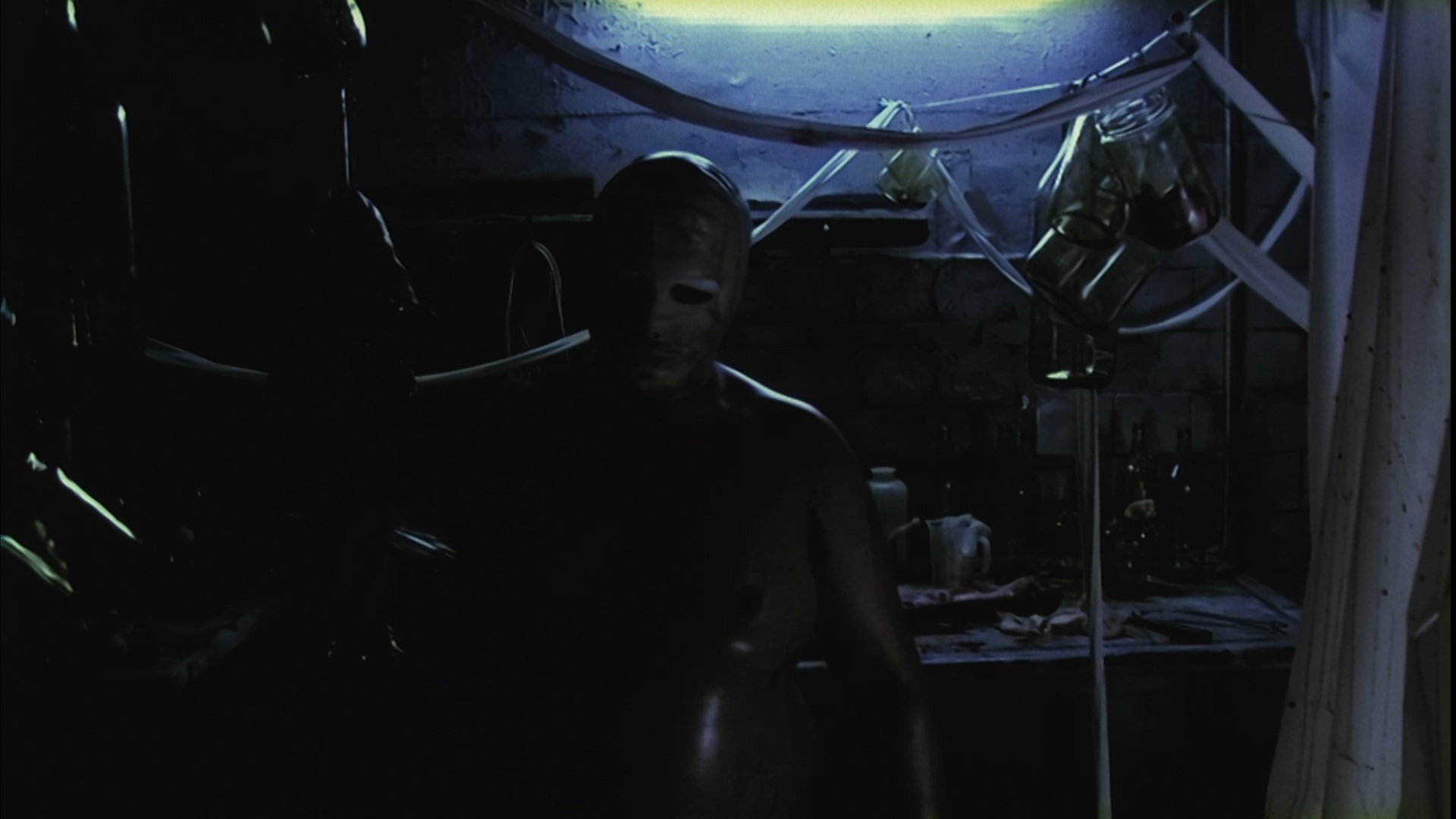 Thus, an instant new banned horror legend was born and the film became the first Treasured Films release to come out in the U.S. instead. "This film was mailed to us by an anoymous user" claims the opening of this collection of capture and torture tales presented by a big-boned guy in a mask and undies who collects videos sent in by serial killers. The idea here was to hand out each story to new filmmakers to take a crack at doing a short, though you can't tell much difference as each one is done in a grubby handheld style typical of the period. From there it's essentially a succesion of random people (predominanly women) being held captive, tormented, and murdered, with a bit of character development involving stock types like horny
Thus, an instant new banned horror legend was born and the film became the first Treasured Films release to come out in the U.S. instead. "This film was mailed to us by an anoymous user" claims the opening of this collection of capture and torture tales presented by a big-boned guy in a mask and undies who collects videos sent in by serial killers. The idea here was to hand out each story to new filmmakers to take a crack at doing a short, though you can't tell much difference as each one is done in a grubby handheld style typical of the period. From there it's essentially a succesion of random people (predominanly women) being held captive, tormented, and murdered, with a bit of character development involving stock types like horny 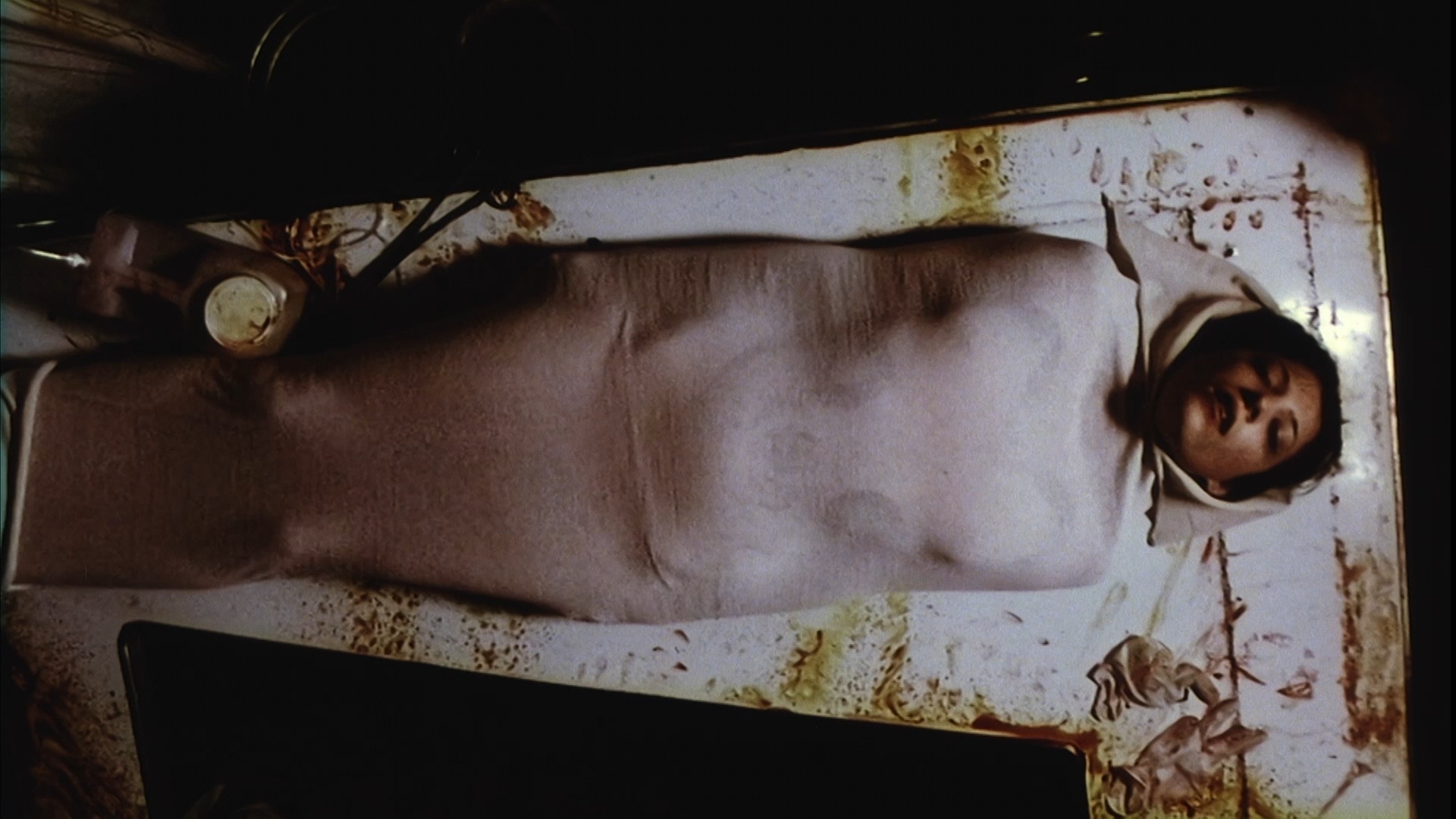 boyfriends. A few fleeting flashes of style can be found here if you squint hard enough, and unpleasant as the subject matter may be, this actually isn't especially graphic with the gore occurring mostly in the dark or away from the camera. The whole thing was more or less the product of director-producer Alessandro Capone (Witch Story, Body Count), and the Blu-ray is actually quite fascinating as an editorial crash course by including extensive scenes from an earlier iteration of the film as the framing device changed from a serial killer game show to a police procedural to the horror host format we have now. The film itself is obviously constrained by the lo-fi look with which it was created, but the extras definitely earn the price tag including "From Witch Lore To Snuff Gore" (33m19s), with Capone talking about his lifelong love of horror, his early experiences on projects like Thrauma, the genesis of the project, the very turbulent process that found him supervising the "beginners" behind the camera, the "horrifying" episode he directed himself, and the miscalculations that led to the film being abandoned. In "Producing a Killing Reality" (16m3s), co-producer Gabriele Pacitto covers his own affinity for horror, the obvious influence here of the Saw and Hostel films, the indie film vibe they were going for, and his surprise at the BBFC decision given the "light, funny attitude" with which the feature was intended. "Cutting Deep: Mapping the Origin of Torture Porn" (11m25s) is a video essay by Giacomo Calzoni covering the evolution of the trend from The Last House on the Left through the Guinea Pig series and countless DIY films for the home video market. Then you get that deleted scenes collection, which comes in at an epic 131m48s and paints a very different picture of how it was conceived. Finally you get a 14m13s gallery (including lots of stills from unused scenes), a storyboards gallery, and a teaser trailer. Buy here.
boyfriends. A few fleeting flashes of style can be found here if you squint hard enough, and unpleasant as the subject matter may be, this actually isn't especially graphic with the gore occurring mostly in the dark or away from the camera. The whole thing was more or less the product of director-producer Alessandro Capone (Witch Story, Body Count), and the Blu-ray is actually quite fascinating as an editorial crash course by including extensive scenes from an earlier iteration of the film as the framing device changed from a serial killer game show to a police procedural to the horror host format we have now. The film itself is obviously constrained by the lo-fi look with which it was created, but the extras definitely earn the price tag including "From Witch Lore To Snuff Gore" (33m19s), with Capone talking about his lifelong love of horror, his early experiences on projects like Thrauma, the genesis of the project, the very turbulent process that found him supervising the "beginners" behind the camera, the "horrifying" episode he directed himself, and the miscalculations that led to the film being abandoned. In "Producing a Killing Reality" (16m3s), co-producer Gabriele Pacitto covers his own affinity for horror, the obvious influence here of the Saw and Hostel films, the indie film vibe they were going for, and his surprise at the BBFC decision given the "light, funny attitude" with which the feature was intended. "Cutting Deep: Mapping the Origin of Torture Porn" (11m25s) is a video essay by Giacomo Calzoni covering the evolution of the trend from The Last House on the Left through the Guinea Pig series and countless DIY films for the home video market. Then you get that deleted scenes collection, which comes in at an epic 131m48s and paints a very different picture of how it was conceived. Finally you get a 14m13s gallery (including lots of stills from unused scenes), a storyboards gallery, and a teaser trailer. Buy here.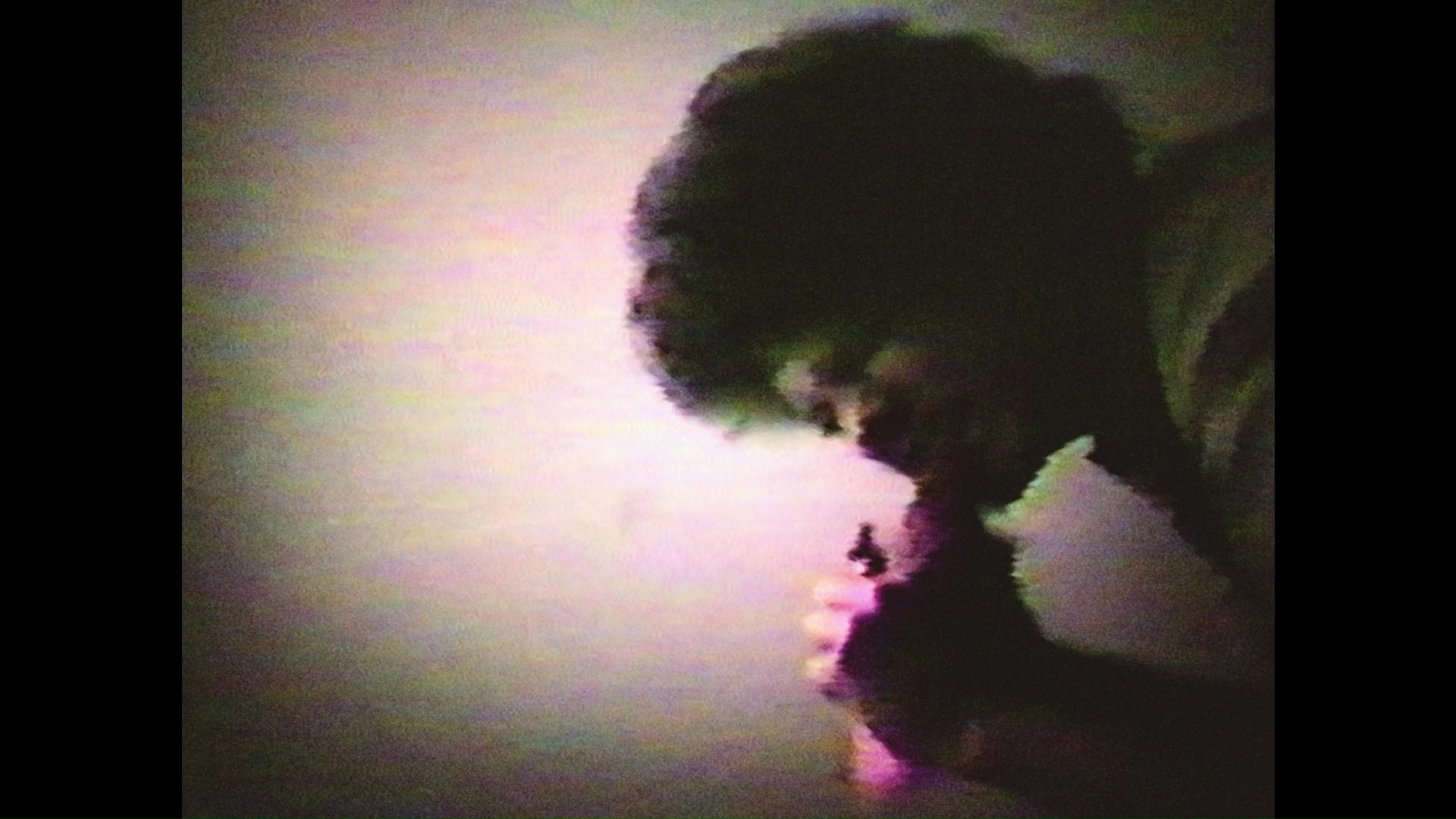 familiar is the creative mind behind Cannibal Orgy and the Films of J.T. IV, a Blu-ray collection from Bleeding Skull dedicated to the late filmmaker also known as John Henry Timmis IV (and whose record-breaking 87-hour movie The Cure for Insomnia is evidently now partially lost). The centerpiece here is 1985's Cannibal Orgy! which, like the
familiar is the creative mind behind Cannibal Orgy and the Films of J.T. IV, a Blu-ray collection from Bleeding Skull dedicated to the late filmmaker also known as John Henry Timmis IV (and whose record-breaking 87-hour movie The Cure for Insomnia is evidently now partially lost). The centerpiece here is 1985's Cannibal Orgy! which, like the 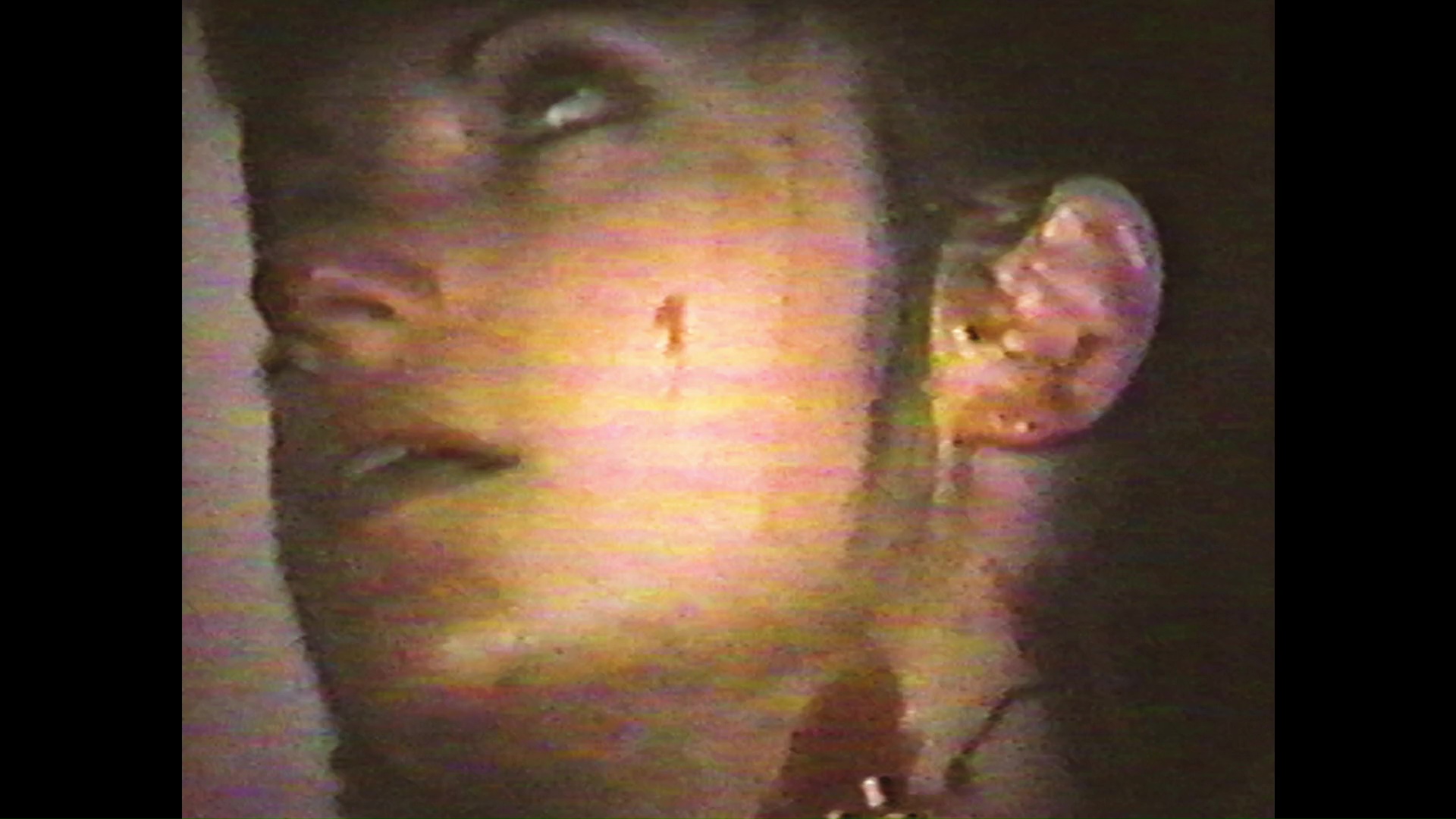 rest of his work, was shot on Super 8, edited on video, and now exists only on very dupey-looking VHS. An absolutely incredible soundtrack is the high point here tying together a disjointed, gore-drenched look at some Manson-worshipping urban cannibals who strut around Chicago, ramble, rip up guts, and go to a concert to see a band called Insane Albinos. None of the characters have names, but the director appears as one of the main cultists and the end titles credit the amusingly named "Lucio Morricone." In a nice touch, the opening of the film touts a process called "Blood-Vision" and indicates red glasses to enjoy it could be purchased for $1, which makes you wish that was really true. The film is presented here in its standard version and a slightly longer cut adding a few seconds of hardcore oral sex footage for some reason, with commentary on the first option by J.T. IV historian Robert Cole Manis with Bleeding Skull's Joseph A. Ziemba shedding quite a bit of light on the enigmatic musician and filmmaker. Also included here is Nightmare City!, a one-hour film from the previous year using much of the same shot material but reworked into a lo-fi portrayal of a militarized America falling to pieces. Again, the soundtrack mixing Timmis' work with preexisting songs is a thing of beauty, and it's also presented in R-rated or X-rated versions. Then you get a slew of odds and ends including a 1m25s excerpts from Insomnia and the music-oriented short films Destructo Rock (2m15s), In the Can (2m8s), Every Dream Home a Heartache (3m42s), Sunday Morning (2m27s), Song for Suzanne (2m18s), Destructo Rock (Live) (4m14s), Killer Shredding (2m11s), I Love You (4m11s), and Reel to Reel Footage (46s). Buy here or here.
rest of his work, was shot on Super 8, edited on video, and now exists only on very dupey-looking VHS. An absolutely incredible soundtrack is the high point here tying together a disjointed, gore-drenched look at some Manson-worshipping urban cannibals who strut around Chicago, ramble, rip up guts, and go to a concert to see a band called Insane Albinos. None of the characters have names, but the director appears as one of the main cultists and the end titles credit the amusingly named "Lucio Morricone." In a nice touch, the opening of the film touts a process called "Blood-Vision" and indicates red glasses to enjoy it could be purchased for $1, which makes you wish that was really true. The film is presented here in its standard version and a slightly longer cut adding a few seconds of hardcore oral sex footage for some reason, with commentary on the first option by J.T. IV historian Robert Cole Manis with Bleeding Skull's Joseph A. Ziemba shedding quite a bit of light on the enigmatic musician and filmmaker. Also included here is Nightmare City!, a one-hour film from the previous year using much of the same shot material but reworked into a lo-fi portrayal of a militarized America falling to pieces. Again, the soundtrack mixing Timmis' work with preexisting songs is a thing of beauty, and it's also presented in R-rated or X-rated versions. Then you get a slew of odds and ends including a 1m25s excerpts from Insomnia and the music-oriented short films Destructo Rock (2m15s), In the Can (2m8s), Every Dream Home a Heartache (3m42s), Sunday Morning (2m27s), Song for Suzanne (2m18s), Destructo Rock (Live) (4m14s), Killer Shredding (2m11s), I Love You (4m11s), and Reel to Reel Footage (46s). Buy here or here. 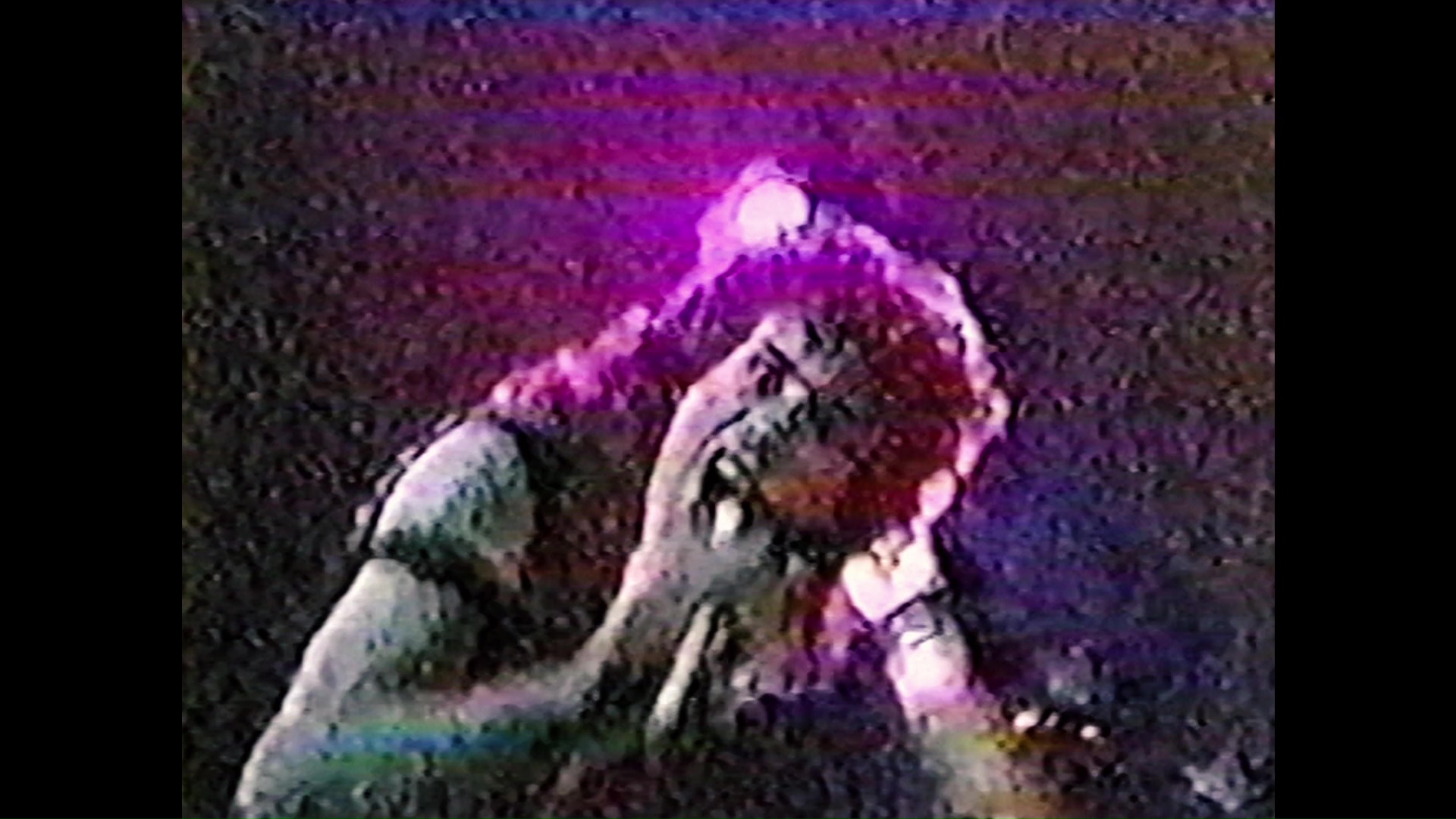 donation perks as video downloads. Trying to review this at all is pretty much impossible, but if
donation perks as video downloads. Trying to review this at all is pretty much impossible, but if 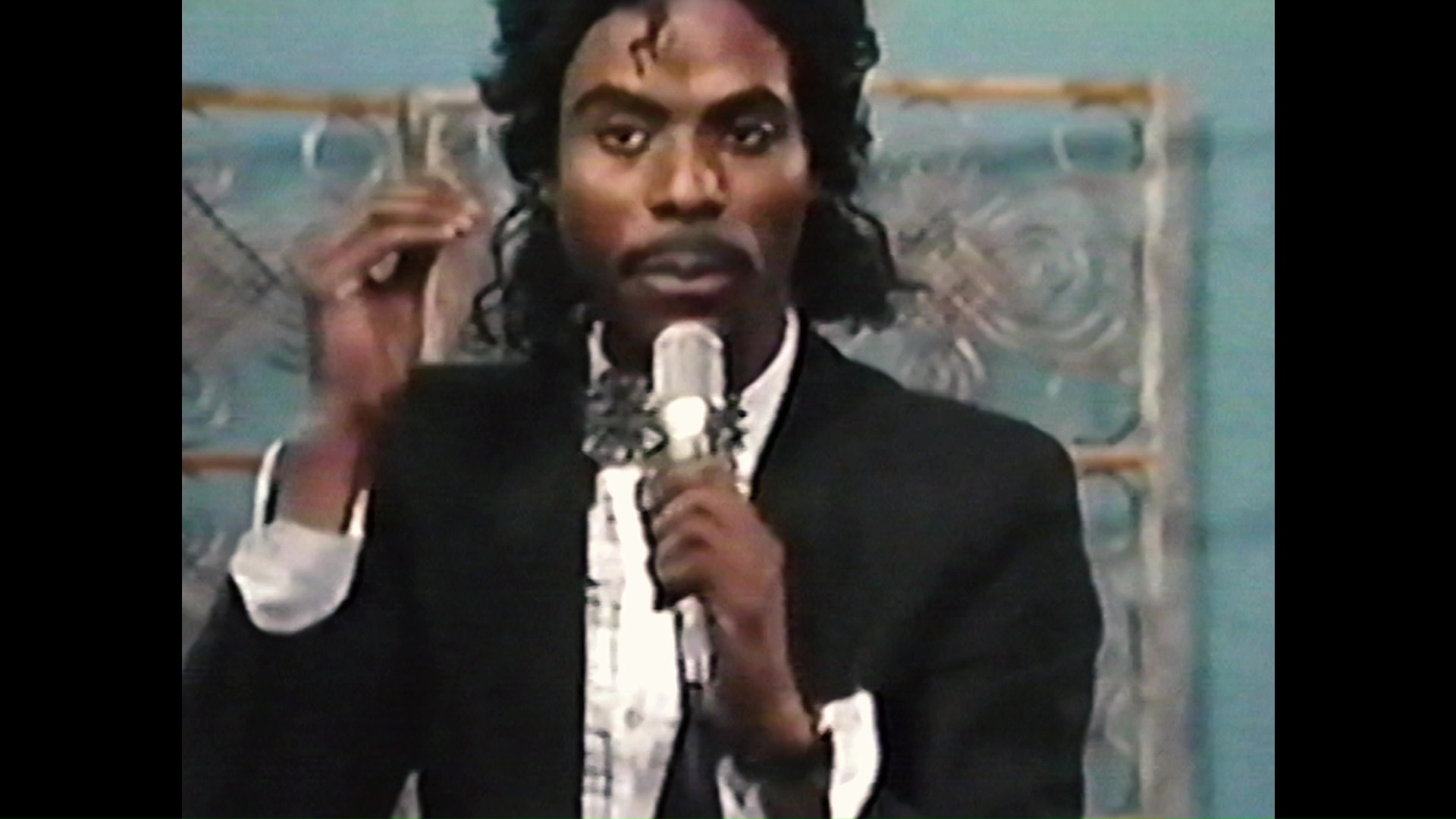 you've watched one of these you know what to expect with collections running a little over an hour each featuring a dizzying assault of pop culture video ephemera. The infamous Siskel and Ebert outtakes, public access rock performances, Juggalos, hair metal '80s commercials, KISS cosplayers, macabre animation, lasso lessons, Ronald and Nancy Reagan, an entire 68 minutes devoted to the jaw-dropping public access show Stairway to Stardom, Christmas greetings, a creepy alien-courting evangelist, Fangoria's Weekend of Horrors, latex applications, Tim Burton, Caroline Munro, and a lot of other stuff that won't be spoiled here. In total you get eight mixtape reels (three on the first disc, five on the second), a couple of which were only shown before as theatrical screenings. Throw in some commentary with AGFA's Millie De Chirico, Jackson Cooper, and Bret Berg pointing out the finer points of what's attacking your eyeballs, and you have a couple of party discs best watched very late at night. Obviously this is all sourced from VHS of varying generations, so this is another "it is what it is" situation. Buy here or here.
you've watched one of these you know what to expect with collections running a little over an hour each featuring a dizzying assault of pop culture video ephemera. The infamous Siskel and Ebert outtakes, public access rock performances, Juggalos, hair metal '80s commercials, KISS cosplayers, macabre animation, lasso lessons, Ronald and Nancy Reagan, an entire 68 minutes devoted to the jaw-dropping public access show Stairway to Stardom, Christmas greetings, a creepy alien-courting evangelist, Fangoria's Weekend of Horrors, latex applications, Tim Burton, Caroline Munro, and a lot of other stuff that won't be spoiled here. In total you get eight mixtape reels (three on the first disc, five on the second), a couple of which were only shown before as theatrical screenings. Throw in some commentary with AGFA's Millie De Chirico, Jackson Cooper, and Bret Berg pointing out the finer points of what's attacking your eyeballs, and you have a couple of party discs best watched very late at night. Obviously this is all sourced from VHS of varying generations, so this is another "it is what it is" situation. Buy here or here.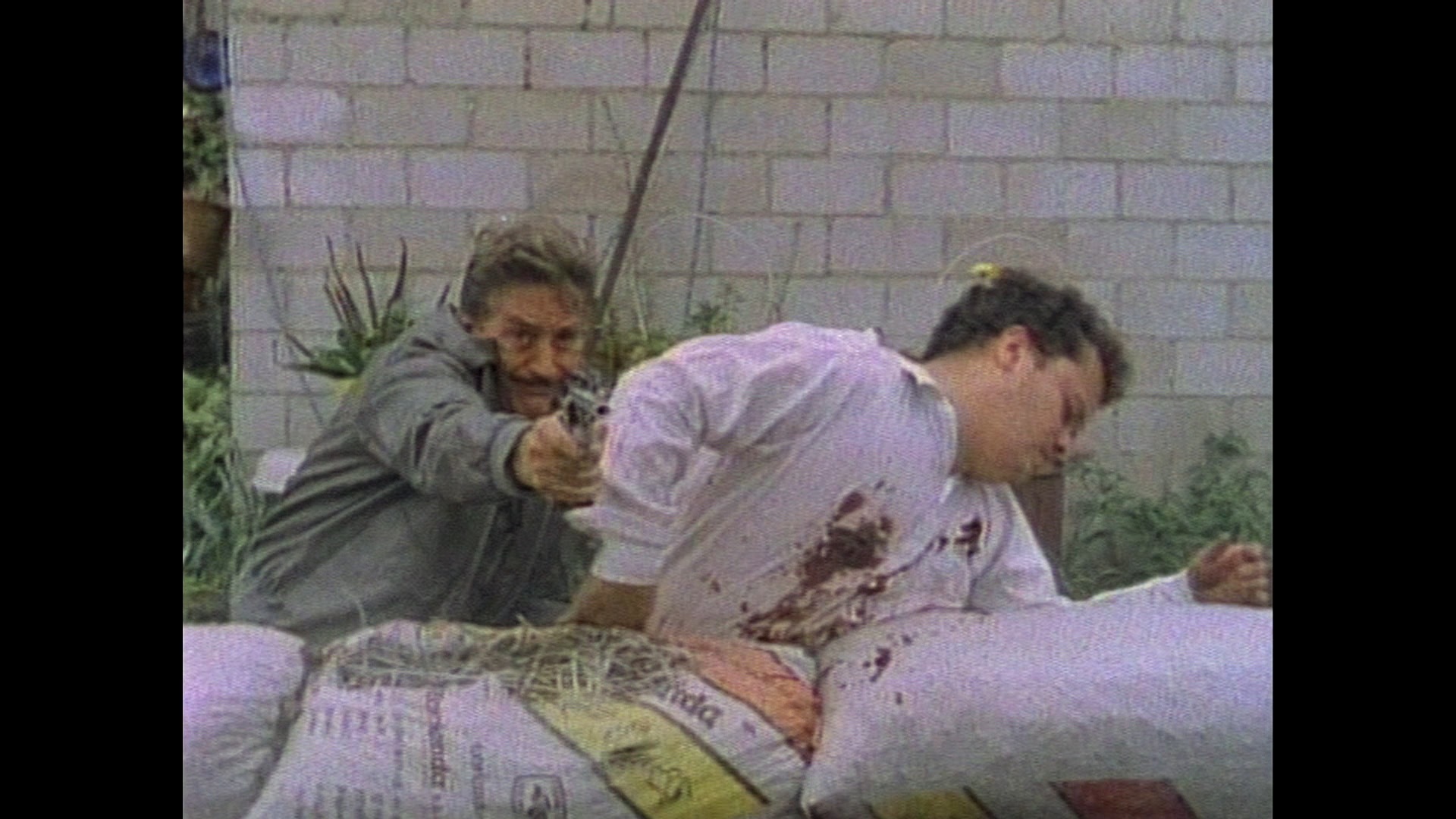 Degausser Video is back and jumps into the direct-to-video action pool with 38 Especial, a 1992 Mexican curio from director Miguel Angel Martinez (who also appears under the screen name Angel Sancho as the bad guy). It's guns, guns,
Degausser Video is back and jumps into the direct-to-video action pool with 38 Especial, a 1992 Mexican curio from director Miguel Angel Martinez (who also appears under the screen name Angel Sancho as the bad guy). It's guns, guns, 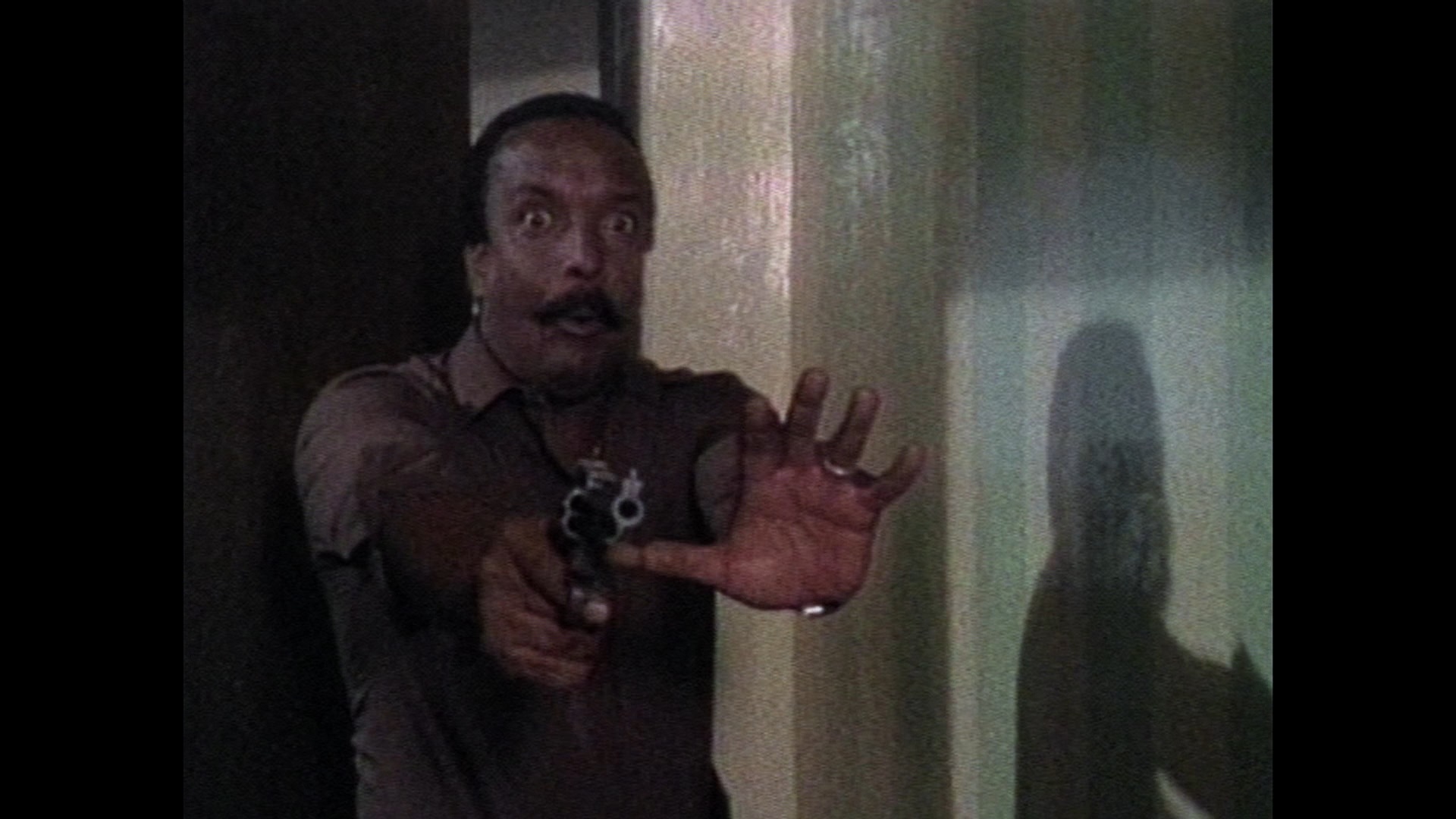 and more guns as Mexico City cops Quiroga (Fernando Almada) and Miranda (Julio Rasec) try to clean up the mean streets and end up focusing on a religious lunatic sex killer / jeweler stabbing his way around the city. A local DJ needling them gets thrown into the mix as well with the obligatory big shootout finale bringing everyone together. That's about it for the plot, which gets compared on the packaging to Dirty Harry but feels a lot like a poliziotto shot south of the border for about $300. That's a good thing if you're in the right frame of mind and know how these things work, with the usual character filler of people chatting and standing around. In what was apparently a common practice at the time, this was shot in 16mm and edited on video so the Blu-ray is presented from the SD master and looks about how you would expect. In addition to the DTS-HD MA 2.0 Spanish mono track with optional English sub, you get a commentary track by film critic and historian Pedro Paunero González who provides plenty of context about the Mexican direct-to-video market, noting parallels to Charles Bronson films around the time, the role of the titular weapon, and the phallic nature of a lot of the imagery. "The Mexican King of Home Video" (10m28s) features Martinez chatting about his actor father and connections to Mexican cinema, the job he hated before becoming a director, and his role in the very busy, demanding world of action films for home video consumption. Buy here or here.
and more guns as Mexico City cops Quiroga (Fernando Almada) and Miranda (Julio Rasec) try to clean up the mean streets and end up focusing on a religious lunatic sex killer / jeweler stabbing his way around the city. A local DJ needling them gets thrown into the mix as well with the obligatory big shootout finale bringing everyone together. That's about it for the plot, which gets compared on the packaging to Dirty Harry but feels a lot like a poliziotto shot south of the border for about $300. That's a good thing if you're in the right frame of mind and know how these things work, with the usual character filler of people chatting and standing around. In what was apparently a common practice at the time, this was shot in 16mm and edited on video so the Blu-ray is presented from the SD master and looks about how you would expect. In addition to the DTS-HD MA 2.0 Spanish mono track with optional English sub, you get a commentary track by film critic and historian Pedro Paunero González who provides plenty of context about the Mexican direct-to-video market, noting parallels to Charles Bronson films around the time, the role of the titular weapon, and the phallic nature of a lot of the imagery. "The Mexican King of Home Video" (10m28s) features Martinez chatting about his actor father and connections to Mexican cinema, the job he hated before becoming a director, and his role in the very busy, demanding world of action films for home video consumption. Buy here or here. 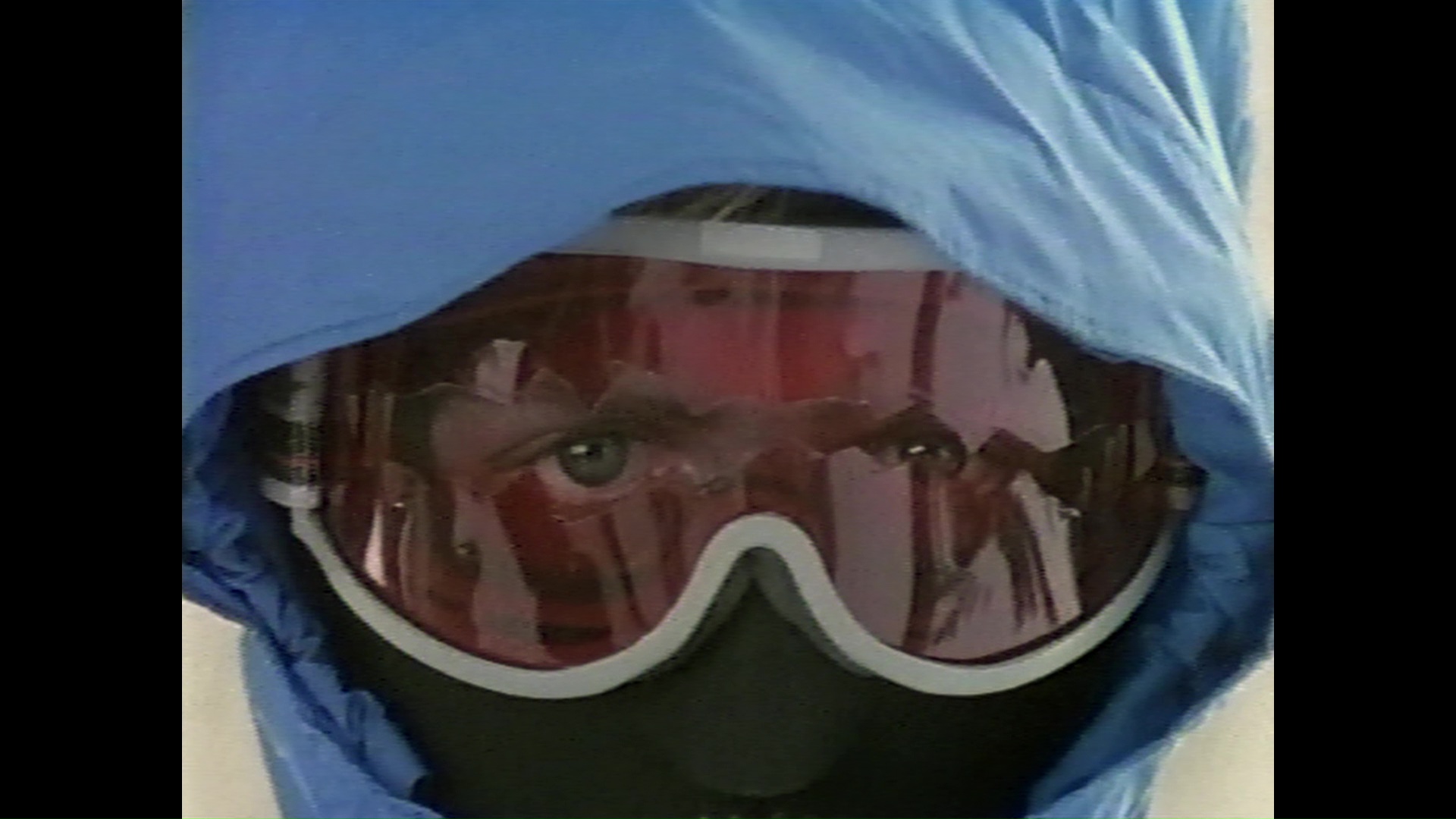 SD master used for the disc as you'd expect. This one is largely notorious for two reasons, namely a very naked appearance by the original Wednesday Addams, the late Lisa Loring (who also married adult film actor Jerry Butler and worked on X-rated film sets), and the single most ridiculous hiding place for a killer in slasher history. If you've seen it, you know. Over the New Year's holiday, seven friends are invited for a skiing getaway at a new resort by a young real estate tycoon, but before you can count to ten little Indians, one of them gets offed on the way by a snowplow. All of the guests are still recovering from the death of their friend Jeff in a skiing mishap a few years earlier, and now they're being picked off one by one by a killer in a ski
SD master used for the disc as you'd expect. This one is largely notorious for two reasons, namely a very naked appearance by the original Wednesday Addams, the late Lisa Loring (who also married adult film actor Jerry Butler and worked on X-rated film sets), and the single most ridiculous hiding place for a killer in slasher history. If you've seen it, you know. Over the New Year's holiday, seven friends are invited for a skiing getaway at a new resort by a young real estate tycoon, but before you can count to ten little Indians, one of them gets offed on the way by a snowplow. All of the guests are still recovering from the death of their friend Jeff in a skiing mishap a few years earlier, and now they're being picked off one by one by a killer in a ski 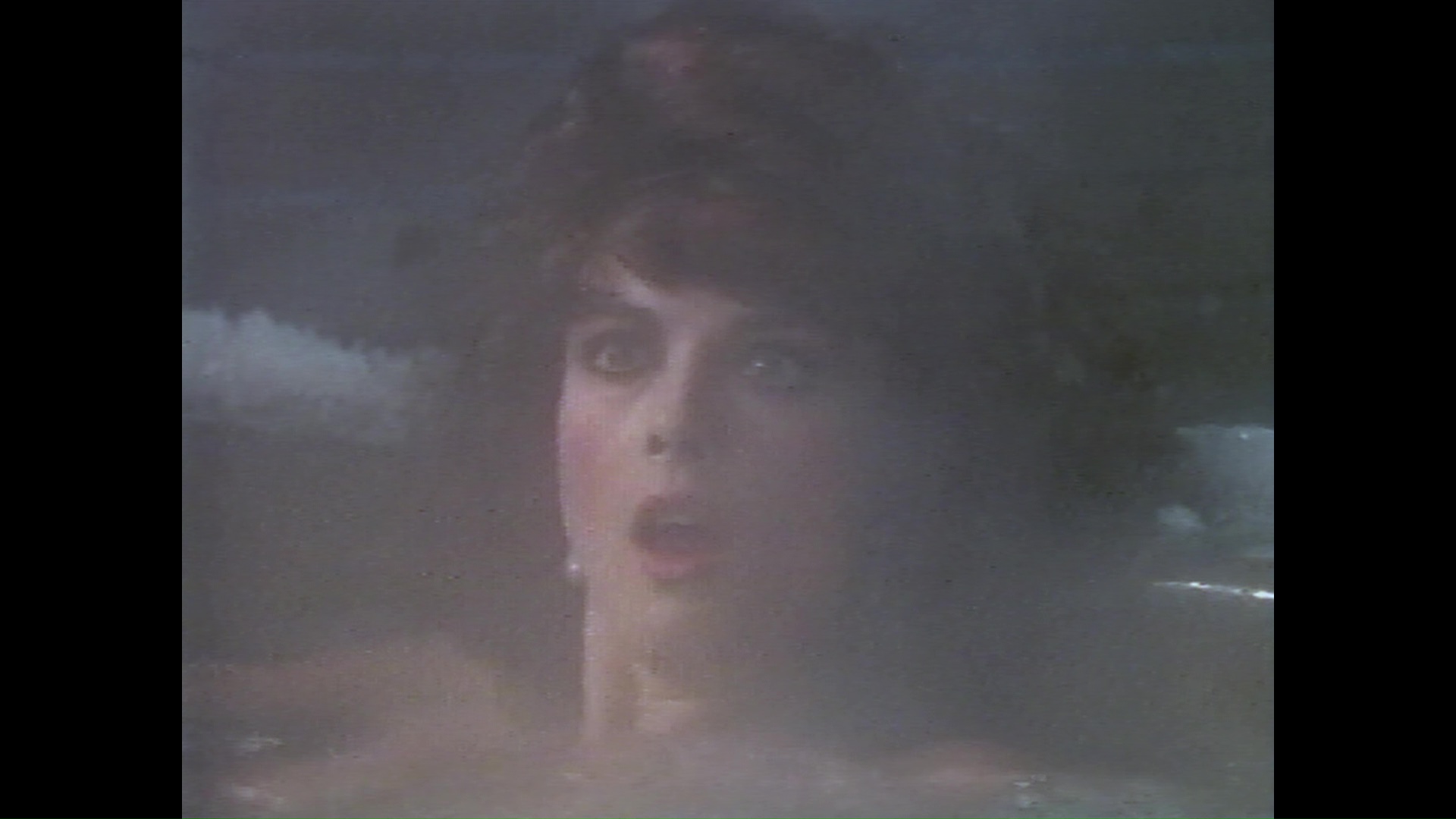 suit. Who will live to ski another day? Part of a tiny winter sports slasher subgenre along with Shredder, this one earned a bit of a fan following thanks to its Prism VHS release and has been talked out a lot in recent years on horror podcasts. That popularity was proven when the Blu-ray went up for sale with its slipcase edition selling out in record time, and fans should be pleased with the presentation here, technical limitations aside. Special features producer and slasher enthusiast Ewan Cant joins director Jeff Kwitny for the first commentary going into detail about the production in Utah, the evolution of the film from a somewhat different script, the casting process, and more, while a second one has the always reliable team of Amanda Reyes and The Hysteria Continues gang (who did what is probably the first podcast episode ever about the film) having a great time riffing on the film during a transitional slasher movie period and giving context for its place in the direct-to-video horror sweepstakes. Then you get a brief Kwitny intro (26s), a 22m27s video interview with him going into a more general account of the film's origins and production of what sounded like a fun shoot, "The Best Part of It" (19m37s) with very bemused actor Ron Kologie about his positive memories of the experience and end result (except for not getting paid) as well as his other far more revealing VHS horror film Cards of Death, an "On Camera Film School" interview (13m7s) with second assistant director Rodney Montague about his education and career in Utah including this film and Berserker, and an image gallery. Buy here or here.
suit. Who will live to ski another day? Part of a tiny winter sports slasher subgenre along with Shredder, this one earned a bit of a fan following thanks to its Prism VHS release and has been talked out a lot in recent years on horror podcasts. That popularity was proven when the Blu-ray went up for sale with its slipcase edition selling out in record time, and fans should be pleased with the presentation here, technical limitations aside. Special features producer and slasher enthusiast Ewan Cant joins director Jeff Kwitny for the first commentary going into detail about the production in Utah, the evolution of the film from a somewhat different script, the casting process, and more, while a second one has the always reliable team of Amanda Reyes and The Hysteria Continues gang (who did what is probably the first podcast episode ever about the film) having a great time riffing on the film during a transitional slasher movie period and giving context for its place in the direct-to-video horror sweepstakes. Then you get a brief Kwitny intro (26s), a 22m27s video interview with him going into a more general account of the film's origins and production of what sounded like a fun shoot, "The Best Part of It" (19m37s) with very bemused actor Ron Kologie about his positive memories of the experience and end result (except for not getting paid) as well as his other far more revealing VHS horror film Cards of Death, an "On Camera Film School" interview (13m7s) with second assistant director Rodney Montague about his education and career in Utah including this film and Berserker, and an image gallery. Buy here or here.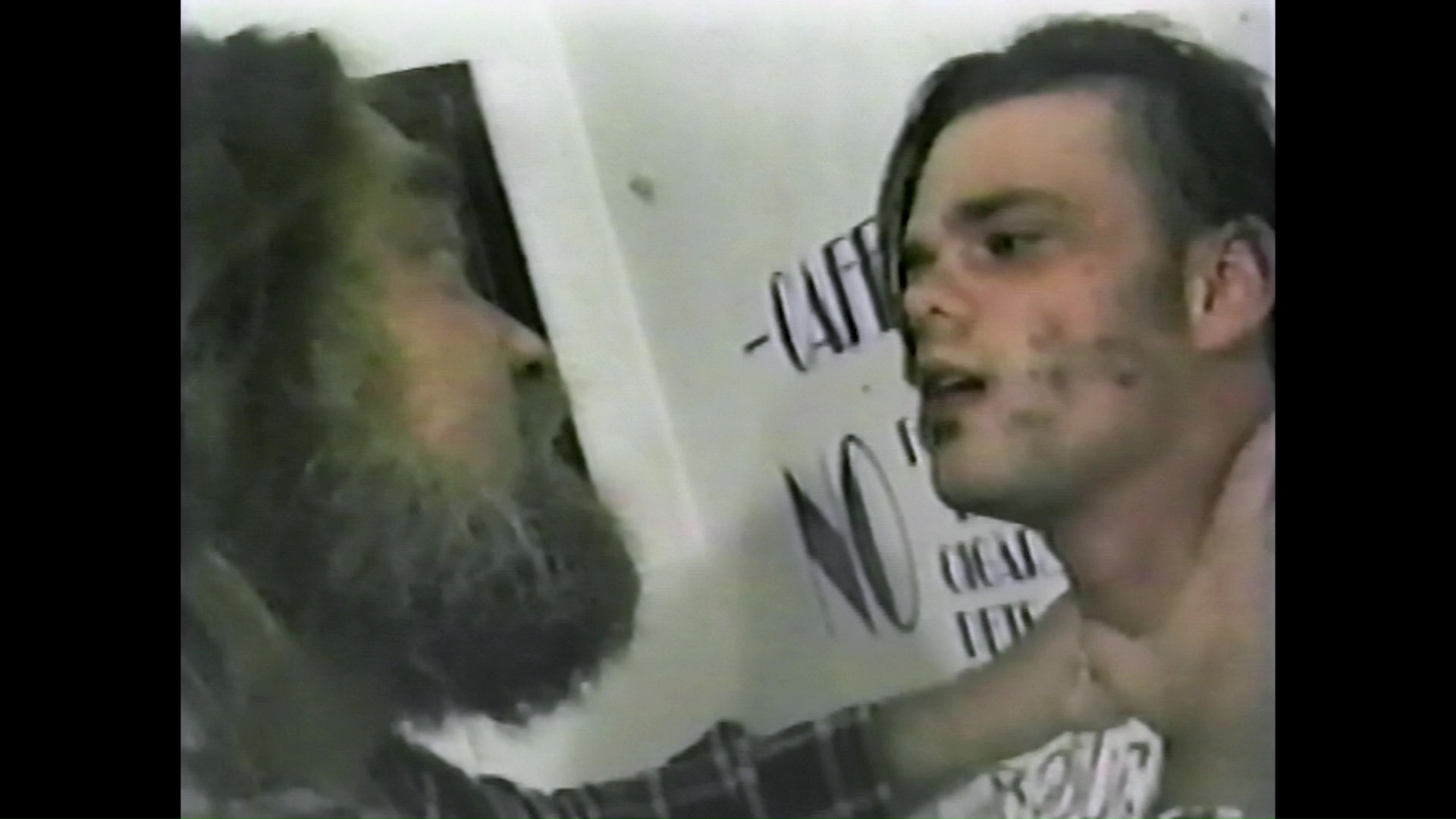 Koch and Wynkoop (which has the film audio playing pretty loudly behind them but has some very funny stuff) and a loose cast commentary with Koch, Scam, Steinke, and Wynkoop swapping stories including hilarious stuff about running around town in their makeup. Also on the disc is Koch's gross-out 1992 "suburban teenage metalhead splatter epic" Lunch Meat (with Koch commentary), with a disclaimer noting that some of the highly unlicensed music in the original had to be replaced. Not to be confused with the much more famous 1987 SOV cannibal film, it involves some slacker teens lounging around and gabbing while one of them decides to come out as a cannibal when he falls in love. Plus there's the 1989 35-minute short White Massacre, shot when the director was "12 or 13" with neighborhood buddies, a homegrown slasher about a guy in a white mask knocking off various teenagers. Both of these were previously paired up on DVD from SRS Cinema, with the latter film getting a commentary as well. "Dead Like a Piece of Old Wax" (8m51s) is a visual essay by Heather Drain enthusing about the outsider punk attributes of Rot, followed by "The Man in Black" (17m12s) with actor Walter Maseda, the very funny Zoom chat "Ladies of the Punk House" (21m51s) with Steinke and production manager Karaly Clubb, "An Appreciation of Rot" (6m6s) with author-filmmaker David C. Hayes, an interview with Koch (20m46s) about the film's place in his DIY oeuvre on its 25th anniversary, "The Man, the Myth, the Legend" (63m18s) with Wynkoop spanning most of his career ,a 16m35s reel of behind-the-scenes footage, 24m41s of bloopers and outtakes, a Rot trailer, and a Bad Blood trailer. Buy here or here.
Koch and Wynkoop (which has the film audio playing pretty loudly behind them but has some very funny stuff) and a loose cast commentary with Koch, Scam, Steinke, and Wynkoop swapping stories including hilarious stuff about running around town in their makeup. Also on the disc is Koch's gross-out 1992 "suburban teenage metalhead splatter epic" Lunch Meat (with Koch commentary), with a disclaimer noting that some of the highly unlicensed music in the original had to be replaced. Not to be confused with the much more famous 1987 SOV cannibal film, it involves some slacker teens lounging around and gabbing while one of them decides to come out as a cannibal when he falls in love. Plus there's the 1989 35-minute short White Massacre, shot when the director was "12 or 13" with neighborhood buddies, a homegrown slasher about a guy in a white mask knocking off various teenagers. Both of these were previously paired up on DVD from SRS Cinema, with the latter film getting a commentary as well. "Dead Like a Piece of Old Wax" (8m51s) is a visual essay by Heather Drain enthusing about the outsider punk attributes of Rot, followed by "The Man in Black" (17m12s) with actor Walter Maseda, the very funny Zoom chat "Ladies of the Punk House" (21m51s) with Steinke and production manager Karaly Clubb, "An Appreciation of Rot" (6m6s) with author-filmmaker David C. Hayes, an interview with Koch (20m46s) about the film's place in his DIY oeuvre on its 25th anniversary, "The Man, the Myth, the Legend" (63m18s) with Wynkoop spanning most of his career ,a 16m35s reel of behind-the-scenes footage, 24m41s of bloopers and outtakes, a Rot trailer, and a Bad Blood trailer. Buy here or here.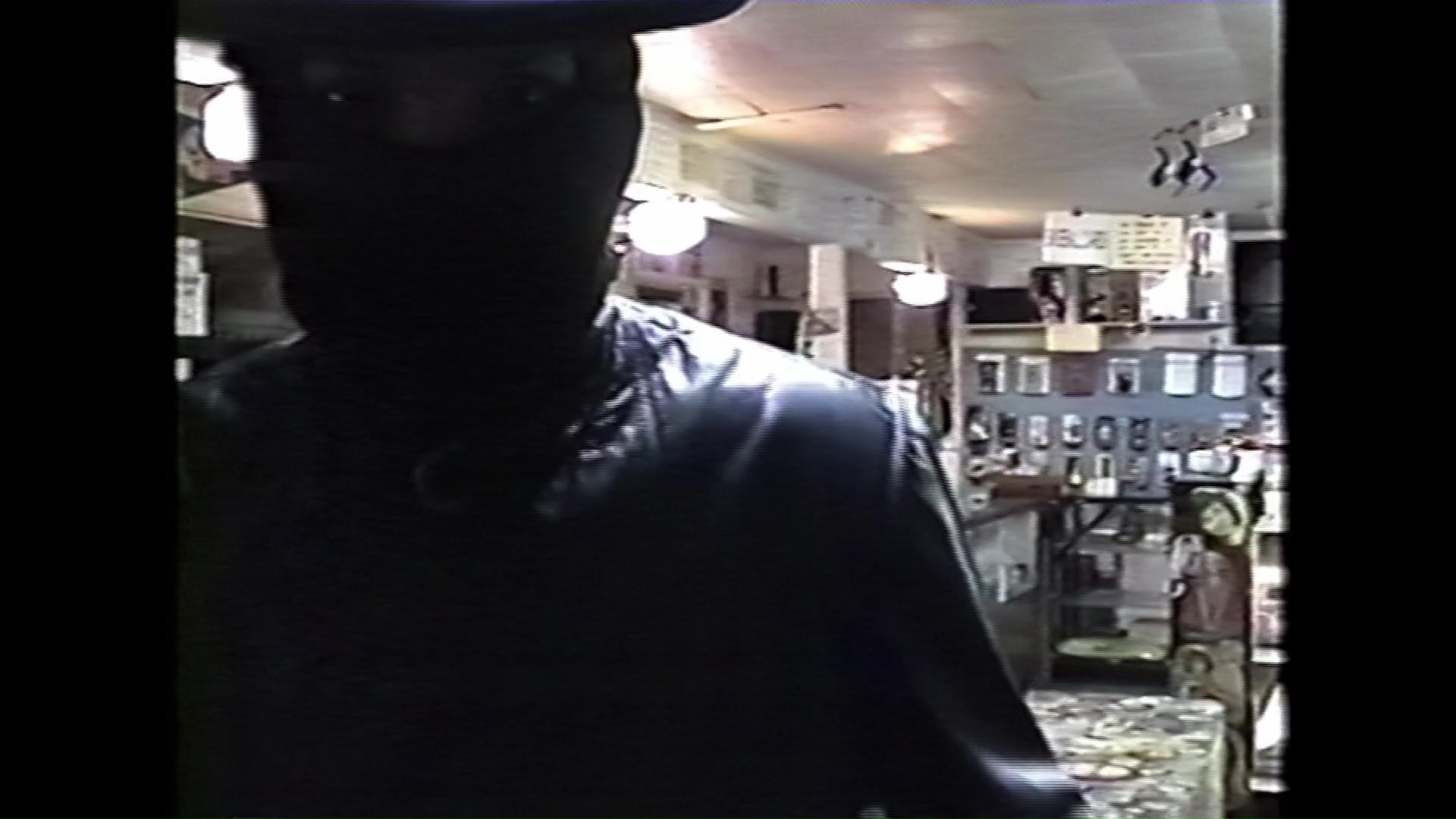 minutes of camcorder-filmed Indiana mood with tons of denim, head scarves, and a scene-stealing pet parakeet often distracting you from the supposed narrative involving a Jack the Ripper copycat on the loose. The killer's getup is pure giallo complete with a duster, black hat and mask, and black gloves, and it has a weirdly hypnotic vibe if you go with it and enjoy some occasional stabs at visual artistry involving mirrors and odd framing. You also get his first film, the near two-hour The Card Game (1987) with Reeves as one of the stars in a tale set in 1980 Reno that, as he himself admits, is a black-and-white micro-budget remake of 5 Card Stud (in which an accused card cheat gets lynched with the attackers all being killed off). It's a long, fuzzy-looking haul with a lot of personality and a very unorthodox structure for its end credits. The one-hour Who Shot Mean B.R.? (1993) feels like a private in-joke and serves as a very belated shout out to the TV show Dallas with a clerk (at Reeves' real convenience store, the Dugout) banging his head and turning into a version of Larry Hagman's character, which of course provokes someone into taking a shot at him. Also coming in at hour but more padded and trippy is 1997's The Gutwrencher, which involves a young man named Paul who keeps having nightmares about a couple of paroled criminals homicidally working their way to his own house. That's pretty much it, but the monochrome photography and droning atmosphere give it a certain
minutes of camcorder-filmed Indiana mood with tons of denim, head scarves, and a scene-stealing pet parakeet often distracting you from the supposed narrative involving a Jack the Ripper copycat on the loose. The killer's getup is pure giallo complete with a duster, black hat and mask, and black gloves, and it has a weirdly hypnotic vibe if you go with it and enjoy some occasional stabs at visual artistry involving mirrors and odd framing. You also get his first film, the near two-hour The Card Game (1987) with Reeves as one of the stars in a tale set in 1980 Reno that, as he himself admits, is a black-and-white micro-budget remake of 5 Card Stud (in which an accused card cheat gets lynched with the attackers all being killed off). It's a long, fuzzy-looking haul with a lot of personality and a very unorthodox structure for its end credits. The one-hour Who Shot Mean B.R.? (1993) feels like a private in-joke and serves as a very belated shout out to the TV show Dallas with a clerk (at Reeves' real convenience store, the Dugout) banging his head and turning into a version of Larry Hagman's character, which of course provokes someone into taking a shot at him. Also coming in at hour but more padded and trippy is 1997's The Gutwrencher, which involves a young man named Paul who keeps having nightmares about a couple of paroled criminals homicidally working their way to his own house. That's pretty much it, but the monochrome photography and droning atmosphere give it a certain 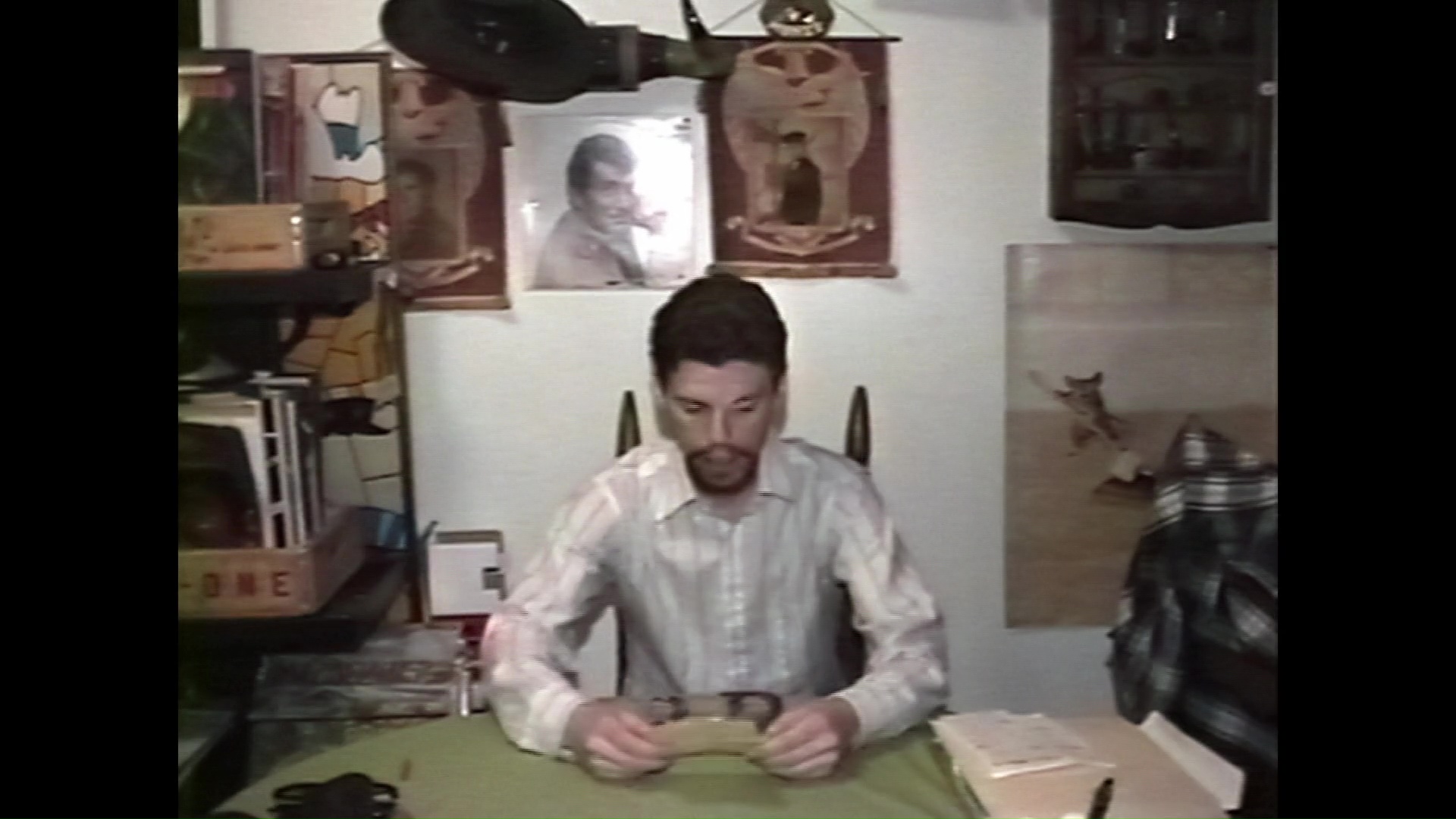 something that sets it apart from your average SOV crime film. Milking a vacation for all it's worth The Crown Jewel of Indonesia (1999) uses some footage our filmmaker shot in Indonesia to serve as the springboard for a story about a valuable jewel being found there and taken to Indiana where a host of oddball characters bounce off each other trying to find out. A goofy romp obviously done just for fun, this is a big change of pace but an interesting one. A lot of ominous disclaimers might get your hopes up for some mondo-style antics in 1999's Trail of Terror, but it turns out to be a 52-minute charity doc about an outdoor Halloween attraction mixing attendee footage and interviews with those who put it on. You'll either find this tedious or insanely compelling depending how much you love regional attraction coverage like this. More travel footage makes its way into 2001's Terminal Targets, a somewhat puzzling conspiracy thriller about how hackers can get into your bank account and rob you blind as part of some techno-terror network. Of course, one of their victims decides to go proto-Jason Staham on them in between lots of shots of Indiana in action and lots and lots of talking. Ghost and Angel Stories from Around the World (2002) uses a map, some crafty location shots, and local narration and reenactments to portray a handful of tales involving the supernatural from the people who supposedly encountered them. (Needless to say, that's disproved by the fact that you'll recognize a few familiar faces by this point.) Finally it's back to that Indonesia footage again with 2003's Ghost Stories from Indonesia, with our humble filmmaker serving as host for local lore and legends related by a handful of folks he encountered on a trip. On one of the commentaries (Deadly Obsession) Reeves is joined by frequent costar Jack Dodson, and Reeves also appears for a 31m4s interview (wearing an American flag shirt) colorfully sketching out the basics of his moviemaking career. Also included is a fun gallery of various tidbits (Reeves at work, a shot of him as an extra in Eight Men Out, VHS art, etc.), plus a 7-minute family remembrance short, and Gutwrencher, Terminal Targets, The Card Game, and Who Shot Mean B.R. trailers. Look around and tucked away on disc one as an Easter egg is the two-hour Dark Obsession, a recut of Deadly Obsession done in black-and-white if you didn't get enough the first time around. Buy here or here.
something that sets it apart from your average SOV crime film. Milking a vacation for all it's worth The Crown Jewel of Indonesia (1999) uses some footage our filmmaker shot in Indonesia to serve as the springboard for a story about a valuable jewel being found there and taken to Indiana where a host of oddball characters bounce off each other trying to find out. A goofy romp obviously done just for fun, this is a big change of pace but an interesting one. A lot of ominous disclaimers might get your hopes up for some mondo-style antics in 1999's Trail of Terror, but it turns out to be a 52-minute charity doc about an outdoor Halloween attraction mixing attendee footage and interviews with those who put it on. You'll either find this tedious or insanely compelling depending how much you love regional attraction coverage like this. More travel footage makes its way into 2001's Terminal Targets, a somewhat puzzling conspiracy thriller about how hackers can get into your bank account and rob you blind as part of some techno-terror network. Of course, one of their victims decides to go proto-Jason Staham on them in between lots of shots of Indiana in action and lots and lots of talking. Ghost and Angel Stories from Around the World (2002) uses a map, some crafty location shots, and local narration and reenactments to portray a handful of tales involving the supernatural from the people who supposedly encountered them. (Needless to say, that's disproved by the fact that you'll recognize a few familiar faces by this point.) Finally it's back to that Indonesia footage again with 2003's Ghost Stories from Indonesia, with our humble filmmaker serving as host for local lore and legends related by a handful of folks he encountered on a trip. On one of the commentaries (Deadly Obsession) Reeves is joined by frequent costar Jack Dodson, and Reeves also appears for a 31m4s interview (wearing an American flag shirt) colorfully sketching out the basics of his moviemaking career. Also included is a fun gallery of various tidbits (Reeves at work, a shot of him as an extra in Eight Men Out, VHS art, etc.), plus a 7-minute family remembrance short, and Gutwrencher, Terminal Targets, The Card Game, and Who Shot Mean B.R. trailers. Look around and tucked away on disc one as an Easter egg is the two-hour Dark Obsession, a recut of Deadly Obsession done in black-and-white if you didn't get enough the first time around. Buy here or here. PREVIOUS SICK PICKS:
October 26, 2024
August 20, 2024
November 16, 2023
August 29, 2023
March 27, 2023
February 27, 2023
November 7, 2022
May 30, 2022
October 19, 2021
September 6, 2020
January 12, 2020
October 28, 2018
March 24, 2018
May 16, 2017
December 27, 2016
September 9, 2016
May 11, 2016
January 9, 2016
August 17, 2015
May 25, 2015
March 4, 2015
September 25, 2014
March 23, 2014
September 23, 2013
September 2, 2012
May 16, 2012
January 1, 2012
October 23, 2011
September 5, 2011
July 4, 2011
June 5, 2011
March 19, 2011
December 24, 2010
October 25, 2010
October 1, 2010
August 11, 2010
June 15, 2010
November 16, 2009
August 6, 2009
June 11 , 2009
March 19, 2009
October 27, 2008
August 7, 2008
July 25, 2008
May 31, 2008
February 19, 2008
January 8, 2008
October 23, 2007
October 8, 2007
September 29, 2007
![]()